the plant
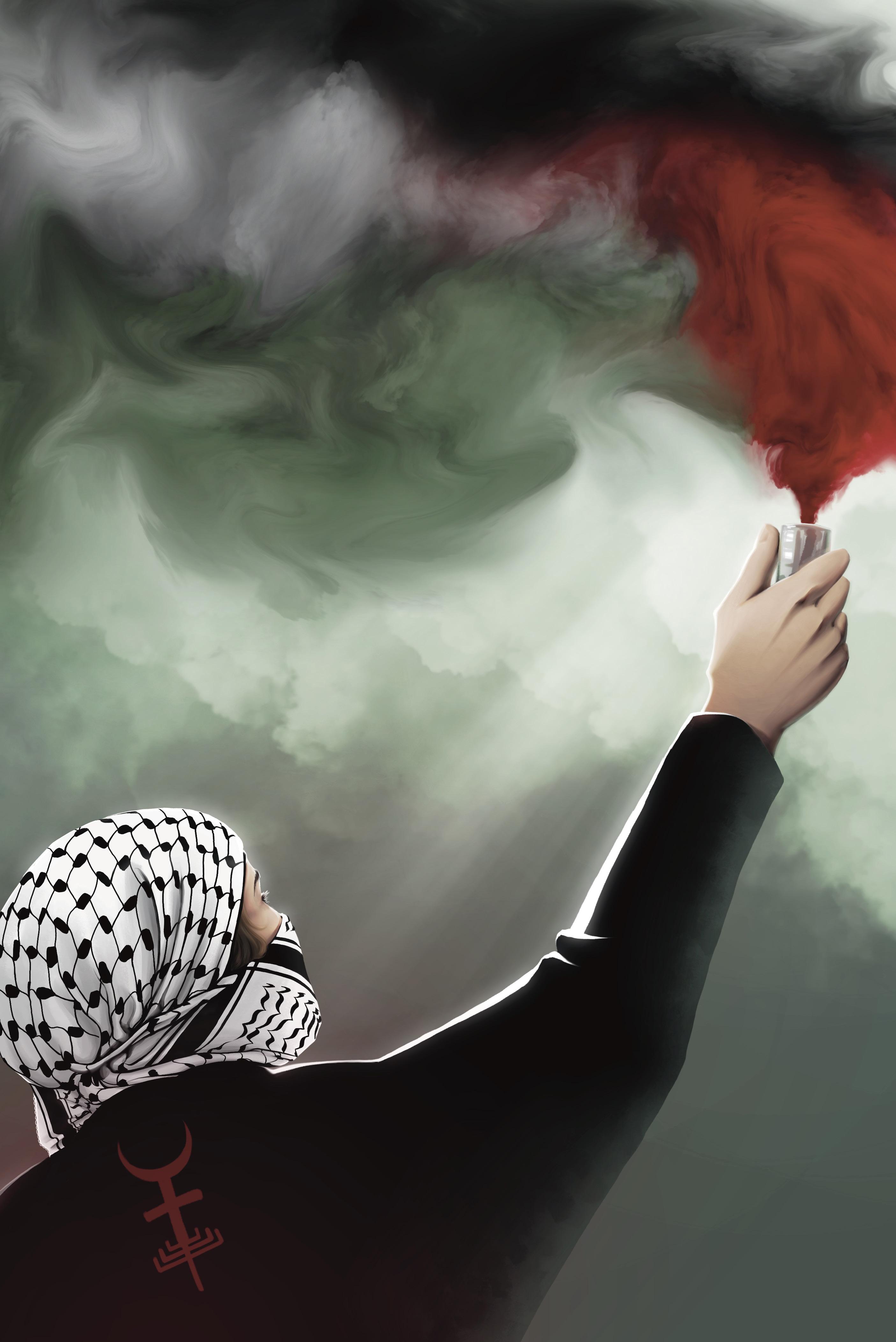
NOVEMBER @THEPLANTDAWSON THEPLANTNEWS.COM
SINCE 1969 VOL 59 NO 3 2023
Index
Letter from the Editor
Dearest readers,
It feels nice to chat again. After the past weeks’ madness, I yearned to write with my heart, but now that I find myself here, I wouldn’t know where to start. I cannot grasp how this month went by so excruciatingly swiftly. It is surreal. It’s as if I got stuck mid-chrysalis, dormant and defenseless, with half a wing awkwardly poking out through deformed caterpillar appendages. A genome lost in translation, scared to exist viscerally, unequivocally. Maybe it’s because I haven’t been dreaming little dreams of anything recently. Or because this month was not exactly da bomb. No matter what, thank you, beloved readers, for picking up The Plant.
Lately, I started fearing I would become a desensitized flesh bag. Zombie-like, I wandered the vast limbo delimiting the abominations of the digital ocean and the mundane naivety of my daily life. A netherworld where the dystopian brutality and growing polarization crawled rent-free. There was a thick goo of shame clinging to my throat’s walls for not constantly witnessing and sharing horrors from overseas. I felt that my mind should be condensed into one giant pupil endlessly absorbing the statistics that epitomize collapsed buildings and children without limbs. One fat yawning eye, consuming it all. What would it be: blue pill, turn away, or red pill, stare some more? Remember, humanity keeps bleeding even when you stop looking at a screen.
Selfishly, I long for the days when I would casually write on aesthetics, cinema, or microbreweries, as if any of it truly mattered. This month, being Editor-in-Chief felt like a failed attempt at adulting as a large mutant baby: it was a lot of frustration, of stumbling about in the dark, of endless questioning, of yearning to do what’s right without being able to name it, of self-inflicted pain. As ongoing tragedies of the most barbaric kind became mediatized for the world to scrutinize and dissect, I realized how vibrantly green the grass under my feet is. I did feel overwhelmed and powerless. Yet, I cannot dare to fathom the incessant battle, suffering, trauma, and exhaustion of our Palestinian peers, as well as the unearthed hurting and distress of our Jewish peers. I cannot dare to. I can, however, scream that pitiless massacres must be put to an end, and that perpetrators be condemned. Our leaders may lower their gaze in the face of sheer cruelty, but we will not. It follows that the newspaper you are holding is not your average issue.
I therefore suggest that you read the first pages carefully, and take some of your time to consider the words into which our writers’ spirit and hard work have been poured. I am incredibly proud of them. And although my heart is flaming with indignation and rage, my ultimate wish is for all of you to receive and share some kindness.
Forever and always,
SIMONE BÉLANGER
Editor-in-Chief, Fall 2023
The Plant is an editorially autonomous student paper. All opinions expressed in The Plant do not necessarily belong to The Plant, but are those of individuals. All content submitted to The Plant or its staff belongs to the paper. We reserve the right to reject or edit all submissions for brevity, taste and legality. The Plant welcomes typed and signed letters to the editor under 400 words.
Copyright 2023
2 THE PLANT
PALESTINE 3 VISUAL ARTS 8 NEWS 13 ARTS & CULTURE 14 EVENTS 15 PLAYLIST 17 VOICES 18 CREATIVE WRITING 24 SPORTS 27 ENVIRONMENT 28 CURIOSITIES 29 SCIENCE & DOSSIER ON
RESOURCES PAGE
General resources:
Human Rights Watch’s 2021 report detailing Israeli Apartheid:
A Threshold Crossed, Human Rights Watch
https://www.hrw.org/report/2021/04/27/threshold-crossed/ israeli-authorities-and-crimes-apartheid-and-persecution
How to identify misinformation and remain unbiased in conversations:
“Don’t believe everything you see and hear about Israel and Palestine,” Vox, Oct. 18, 2023.
https://www.vox.com/technology/2023/10/12/23913472/ misinformation-israel-hamas-war-social-media-literacypalestine
Official website for the boycotts against Israeli injustice: https://bdsmovement.net/
Documentaries:
Gaza Fights for Freedom, 2019.
Full Documentary: https://youtu.be/HnZSaKYmP2s?si=O1AGdo1t0R8fbeyo
5 Broken Cameras by Emad Burnat and Guy Davidi, 2012. Explicit, viewer discretion is advised.
Full Documentary and introduction by the directors: https://www.youtube.com/watch?v=TZU9hYIgXZw
Books:
The Ethnic Cleansing of Palestine by Ilan Papé, 2006. On Palestine by Ilan Papé and Noam Chomsky, 2015. A Map of Absence edited by Atef Alshaer, 2018.
The Hundred Years’ War on Palestine by Rashid Khalidi, 2020.
Instagram
accounts to follow for information:
@BYPLESTIA @WIZARD_BISAN1 @AL.INSAN__
@EYE.ON.PALESTINE @ISLAMICRELIEFCANADA @PALESTINE.PIXEL @MIDDLEEASTEYE @GAZANOW
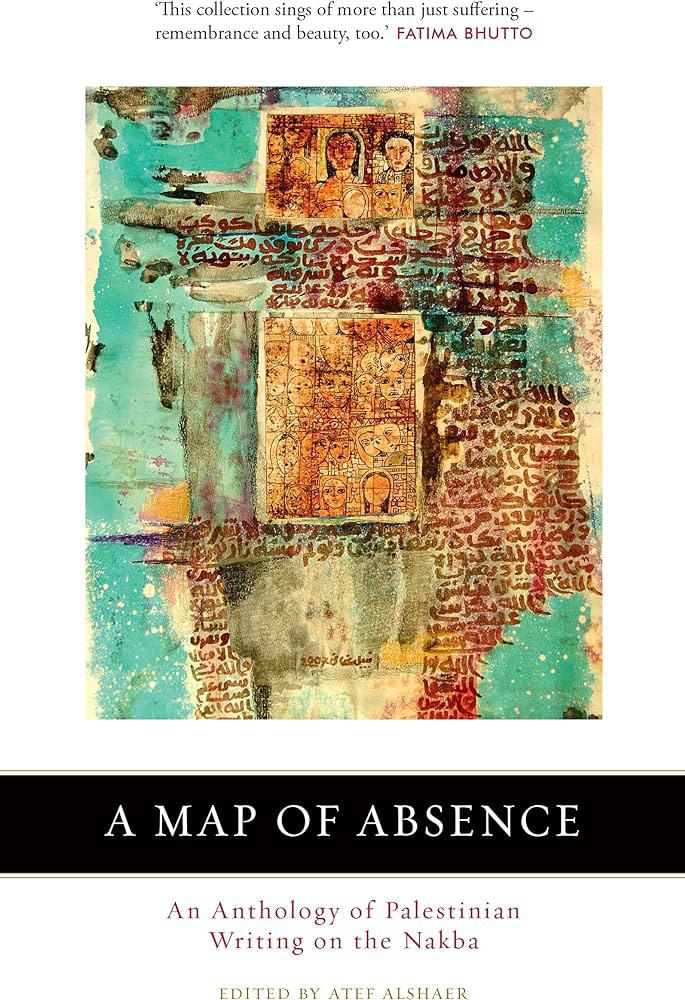
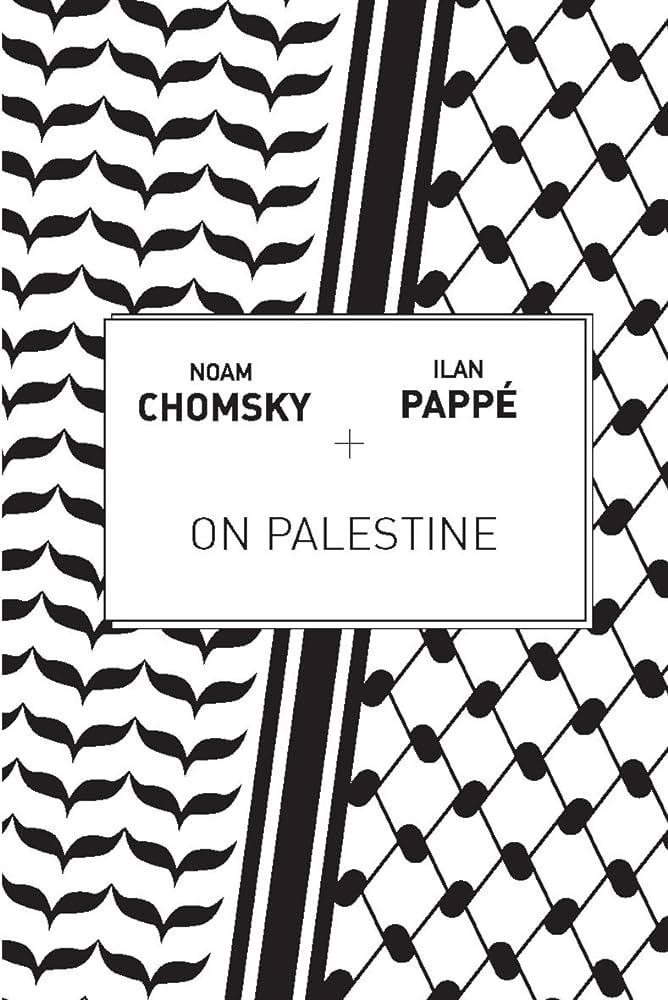
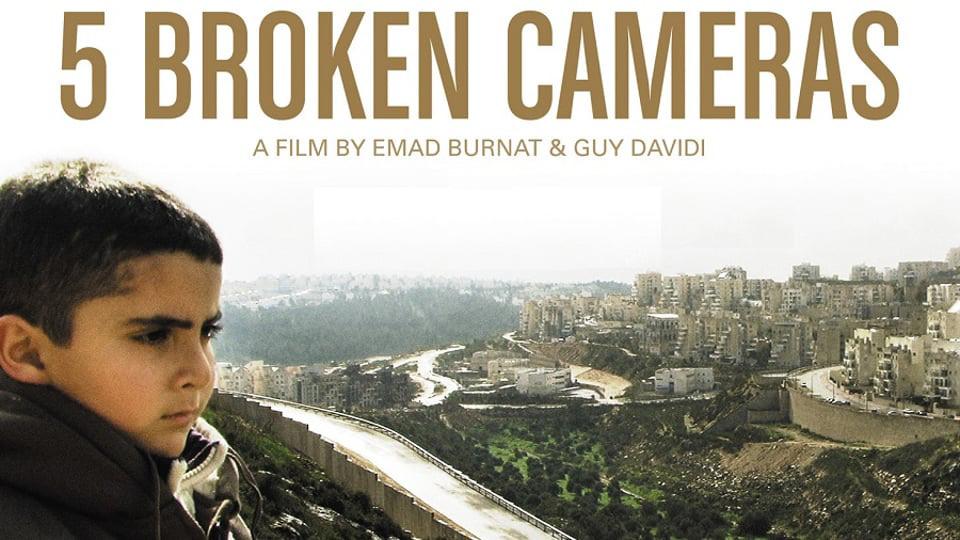
3 DOSSIER ON PALESTINE
Photo VIA AMAZON
Photo VIA KANOPY
Photo VIA AMAZON
Seeds of Injustice: The historical context behind Israel and Palestine
SANAD HAMDOUNA Cover Artist
On October 7th 2023, media outlets were dominated by the news of Hamas’ unprecedented attack on Israel. In a devastating operation named the “Al Aqsa Flood,” Hamas’ Al Qassam Brigades broke through the fences surrounding Gaza. They attacked at least 25 Israeli military bases in addition to Israeli settlements on the border, killing hundreds and taking over 200 hostages. Israel immediately started bombing civilian areas in Gaza and cut off their water and electricity.
Israel has killed at least 9227 Palestinians in Gaza as of November 3rd, almost all civilians, more than a third of which were children.
It is the constant refusal by the Israeli state to comply with international law and grant them this right that has kept the flames of this injustice ablaze.
This tragic loss of life has been rightfully mourned across the globe, but has also raised many questions, namely “how do we make sure this never happens again?” and “how did we get here?”
We must begin during the last few decades of the Ottoman Empire’s rule of historic Palestine. According to Ussama Makdisi, a professor of History at Rice University, the approximately 400 years of Ottoman rule saw Palestinians of all faiths coexist in relative peace and harmony. The region’s majority had long been Muslim with Christian and Jewish minorities. These minorities, despite having religious and cultural autonomy, lacked certain legal privileges that were afforded only to Muslims. They were finally granted equal rights in the 19th century, during the Ottoman Tanzimat period.
Meanwhile, in Europe, the Austro-Hungarian thinker Theodore Herzl
was founding the beginnings of a Jewish nationalist movement known as Zionism. Generally, Zionists believed that the only solution for the rampant anti-semitism in Europe was to create a Jewish homeland in Palestine. In 1897, the first Zionist Congress was held in Switzerland, and thus, the road to establishing the Israeli state began.
Zionists were quickly confronted with the logistical problems of establishing a Jewish homeland in a place already inhabited by a majority of Muslims and Christians. Debate around this issue consumed much of the Zionists’ time, but they eventually came to the conclusion that the Zionist project rested on the removal of the Palestinian population from the land.
Vladimir Jabotinsky, an influential Zionist leader, wrote in his 1925 essay, “The Iron Law,” “If you wish to colonize a land in which people are already living, you must provide a garrison for the land, or find some rich man or benefactor who will provide a garrison on your behalf. Or else-or else, give up your colonization, for without an armed force which will render physically impossible any attempt to destroy or prevent this colonization, colonization is impossible, not difficult, not dangerous, but IMPOSSIBLE!… Zionism is a colonization adventure and therefore it stands or falls by the question of armed force.” Jabotinsky’s words are an almost perfect description of how the Zionist movement went on to colonize Palestine.
After failing to convince the Ottoman sultan to support the Zionist colonial project, Herzl turned to the British, who, in 1917, issued a public statement, “The Balfour Declaration,” promising their support of the Zionist project. Only a few years later, in 1920, the British Mandate for Palestine began. Britain seized control of Palestine by promising eventual independence to the Palestinians already living there if they joined the fight against the Ottoman Empire, which they did.
During the mandate, the British government began facilitating the mass settlement of European Jews onto Palestinian land. This eventually
led to the Arab revolts of 1936 - 1939, when Palestinians realized that Britain had no intention of granting them independence and was solely interested in fulfilling the promise made in The Balfour Declaration. In response to the Arab Revolts, the British administration placed restrictions on European Jewish immigration and land purchases. In turn, this led to the Jewish Insurgency of 1944 to 1948, which was executed by a few underground paramilitary groups that would later lay the foundations of the Israeli Defence Forces; namely, the Haganah, Irgun, and Lehi militias.
In 1947, Britain relegated the responsibility of finding a solution that would please both parties to the newly formed United Nations. The UN’s proposed solution, which lacked any input from the Palestinians, was to split the land into two states — with Jerusalem as a special international zone. Zionists accepted the plan, seeing it as a stepping stone to their original goal which included all of Mandatory Palestine and much of the surrounding land. Palestinians, who were represented through other Arab leaders, rejected the UN’s proposition because it relied on giving over half of their land, which was hugely populated and cultivated, to recent Jewish arrivals who only consisted of a third of the population.
Despite its rejection by the Palestinians, the 1947 UN Partition Plan for Palestine was adopted in a vote among UN member states. Many states involved in the vote reported receiving bribes and threats from Zionists and the United States.
In 1948, the British officially ended the Mandate on Palestine, Israel declared independence, and the Palestinian Nakba began.
In Arabic, the word “Nakba” means catastrophe. It is used to refer to the expulsion of over 750 000 Palestinians from their homes by Zionist militias and to the series of massacres and human rights’ abuses perpetrated in the process. The Nakba was effectively the ethnic cleansing of Palestinians from the land and was seen as a necessary prerequisite to the founding
4 THE PLANT
of Israel. Zionists did not believe their project could succeed while Palestinians still lived in the lands that are now considered Israel.
Ben Gurion, Israel’s first prime minister himself said, “We must expel Arabs and take their places and, if we have to use force […] to guarantee our own right to settle in those places, then we have force at our disposal.” Moshe Sharett, Israel’s second prime minister, said, “We have forgotten that we have not come to an empty land to inherit it, but we have come to conquer a country from people inhabiting it.”
These two quotes clearly communicate the intentions of the Zionist leaders to ethnically cleanse the Palestinians from their land and settle it.
The first massacres of the Nakba started in April of 1948, shortly before Israel’s Declaration of Independence in May of 1948. Zionist militias stormed Palestinian villages and committed heinous acts on the civilians in an effort to both spread terror amongst the Palestinian population and force them to flee. These acts of terror, including public mass executions, rape, desecration of corpses, and public humiliation, were extremely well-documented and detailed accounts can be found from both Palestinian survivors and militia members in a plethora of works, such as the documentary 1948 Creation and Catastrophe, and the book The Ethnic Cleansing of Palestine written by Israeli historian Ilan Pappé.
Israel’s Declaration of Independence and the revolting massacres of Palestinians triggered a war with the surrounding Arab states, who were still struggling to recover from French and British colonialism. At the end of the war, Israel controlled all the land designated to them by the UN, in addition to 60% of the land designated for a Palestinian state, and nearly emptied it of its native population through its ongoing ethnic cleansing efforts. An estimated 500 Palestinian towns and villages in this area were depopulated, destroyed, or otherwise rendered uninhabitable. Jordan controlled the West Bank and Egypt controlled the Gaza Strip until 1967, when Israel invaded
both territories and has retained effective military control over them to this day.
On the still smoking rubble of the villages destroyed in 1948, Israel built settlements for foreign Jews, who were intensely and persistently encouraged to move in and were granted instant citizenship. The Jewish National Fund, a quasi-governmental organization founded in 1901, immediately started a forest planting campaign on top of the remaining villages to both hide the rubble and prevent Palestinians from returning. They planted millions of European pine trees, which were effective because of how fast they grew, but have since greatly harmed the local ecosystem and are especially prone to forest fires.
The 750 000 Palestinians expelled by Israel’s creation were given refugee status by the UN and the 156 000 Palestinians who remained became Israeli citizens, but lived in ghettos and were governed by military rule until 1966.
It was Canada’s Indian Act that inspired much of South African Apartheid, which in turn inspired Israeli Apartheid.
These Palestinian refugees and their descendants have an undeniable right to return to their homeland, not only by virtue of morality, but also under international law as codified by the UN General Assembly Resolution 194 of December 1948. It is the constant refusal by the Israeli state to comply with international law and grant them this right that has kept the flames of this injustice ablaze. Every act of resistance by Palestinian militant groups from 1948 to the present day has been primarily motivated by the wish to return to their homeland.
Because Israel’s very creation was dependent on the violent transfer of the native Palestinian population, its maintenance is also dependent on
the violent subjugation of the remaining and internally displaced Palestinians. They do this with a system of laws and policies that all major human rights organizations have identified as apartheid. This includes segregated roads and license plates, Jewish-only towns and enclaves, limited to non-existent voting rights, segregated school systems, and much more. Human Rights Watch, Amnesty International, and B’Tselem (an Israeli human rights organization) have all published extensive reports on Israel’s apartheid system. These reports can be found for free on their respective websites.
The apartheid system is by no means a new way of maintaining a colonial state. In fact, as Canadians, we should be aware that it was Canada’s Indian Act that inspired much of South African Apartheid, which in turn inspired Israeli Apartheid.
Palestinians live in a state of constant fear and violent subjugation; especially in Gaza, which was declared uninhabitable by the UN in 2020; thanks to Israel’s total economic and territorial siege. Not to mention its regular bombing of Palestinian homes and vital civilian infrastructure (such as schools, the water desalination plant, and hospitals). Abby Martins, an independent journalist, details the living conditions in Gaza in her 2019 documentary Gaza Fights for Freedom, and conditions have only worsened since its release.
When children live their entire life knowing nothing but the pain inflicted by such a violent regime and when the lives of entire generations are defined by ongoing injustice, there is no choice, but to expect explosions of violent retaliation. The only way to put a permanent end to the violence is to find justice for the Palestinians and support them in building a brighter future for everyone involved.

5
DOSSIER ON PALESTINE
Unraveling the Web of Propaganda: Deception, Disinformation in Israel-Palestine Crisis
DEFNE ALIEFENDIOGLU News Editor
Malcolm X, the renowned American Muslim minister and human rights activist, once wisely cautioned, “If you’re not careful, the newspapers will have you hating the people who are being oppressed, and loving the people who are doing the oppressing.” His words remain poignant in the context of recent events between Israel and Palestine, where we have observed a considerable amount of propaganda aimed at justifying the ongoing crisis in Gaza. But what forms does this propaganda take and how can we discern it?
Propaganda is information that is used to support or popularize a specific political cause or point of view, especially when it is biased or fraudulent. War propaganda, on the other hand, is similar, but mostly focuses on promoting false beliefs in the minds of soldiers and civilians to dehumanize and arouse hate
against a supposed enemy.
Since the events of October 7th, Israel has persistently claimed that its attacks on Gaza are primarily acts of self-defense against Hamas. When Israel conducted an airstrike on the Al-Ahli Arab Hospital, the State of Israel offered four different justifications. The first claim was that Hamas had bombed the hospital themselves, the second asserted the existence of a Hamas base beneath it, the third suggested a misfire, and the fourth admitted that the bombing was intentional, but that they warned civilians a day prior and instructed them to evacuate — something that would have been impossible for citizens to do.
The same narrative of an underground Hamas base was employed to justify the bombing of the historic Greek Orthodox Church, which had been providing shelter to over 400 Palestinians. These claims of “ fighting Hamas ” began to crumble when Israel started bombing the West
Bank, a region where Hamas is not prominently active, and using white phosphorus munitions, a chemical substance that has the power to melt skin to the bone and lead to organ failure, on innocent Palestinians. Nonetheless, many news outlets and media continue to label this conflict as the “Israel- Hamas war” despite mounting evidence to the contrary. This is not a war against Hamas; it is a war against Palestine and Palestinian citizens. As of November 4th, the death toll in Gaza has risen to over 9,500, with over 6,400 of these murders being women and children, constituting a distressing 67% of the total. Additionally, the number of injuries has reached 23,516. Meanwhile, Israel reports over 1,400 fatalities with 5,400 casualties of its own.
Moreover, on October 10, Aditya Raj Kaul, a 9TV Network ’s executive editor, tweeted on X, formerly known as Twitter, “a pregnant woman in Southern Israel was found

6 THE PLANT
Photo VIA MONDOWEISS. ILLUSTRATED BY CARLOS LATUFF
by Hamas terrorists . They dissected her body. Her stomach was cut open and they took the fetus out with the umbilical cord. And let the unborn child die slowly out of his mother’s womb. This is what inhuman savages Hamas do to people.” The tweet would become seen by 10.6M people on the platform and the news would start to spread. The fact of the matter is that this incident truly did happen. However, Hamas did not dissect an Israeli woman; Israel performed this act on a Palestinian woman during the Sabra and Shatila massacre of 1982 . This refers to the Lebanese Civil War massacre, which took place over three days and claimed the lives of over 3,000 civilians, both Palestinian and Lebanese. On the 40th anniversary of the massacre, 75-year-old witness Umm Abbas spoke about the atrocities she saw against Palestinian women, including the murder and removal of unborn children from their bodies.
“What did I see? A pregnant woman who had her baby ripped out of her stomach, they cut her in two,” she said.
As of November 4th, the death toll in Gaza has risen to over 9,500, with over 6,400 of these murders being women and children, constituting a distressing 67%.
Several propaganda advertisements were also featured on YouTube. One of these advertisements, that would play before a video, looked like it was meant for children, featuring lullaby music, pastel colors, stars, and rainbows in the background. However, the message that appeared in the advertisement was not made for children. It began with the words, “ We have an important message to tell you as parents .” The music then suddenly stopped and the words, “ 40 infants were
murdered in Israel ”, with an emphasis on the number 40, appeared on the screen. The letters then disappeared, giving way to the statement, “ By the Hamas terrorists (ISIS) ,” followed by, “ Just as you would do everything for your child. We will do everything to protect ours. ” The gentle music then returned accompanied by the words, “ Now hug your baby and stand with us, ” with the State of Israel’s logo appearing at the end.
The claim of the 40 murdered infants started after there was an attack on the kibbutz of Kfar Aza on October 7th, and the press was granted permission by the Israeli army to visit the attack site. After the visit, Nicole Zedeck, a reporter from Israeli news outlet i24 tweeted, “Soldiers told me they believe 40 babies/children were killed.” As the tweet started gaining attraction, the information transformed into “at least 40 babies were killed and some were beheaded.” However, the Israeli army could not confirm this claim. But even with the refusal of confirmation or proof from the Israeli army, the words “ 40 babies decapitated by Hamas ” were plastered all over the news. Western news outlets such as CNN later announced, “The Israeli prime minister’s spokesman just confirmed babies and toddlers were found with their heads decapitated in Kfar Aza.” Only to take back their words later, stating that Israel could not substantiate claims. Even President Joe Biden stated that he saw pictures of the beheaded children, which the White House had to then denounce, clarifying that Biden had never seen these “ conformed pictures of terrorists beheading children ” as he had previously attested to.
Other journalists who also visited the attack site stated that they had never heard of these beheadings during the tour and that there was no evidence of it. There is no evidence that the children that the State of Israel mentioned in the advertisement are real. And while Israel and the media are labeling Hamas as “ terrorists ,” accusing them of such acts,
currently, according to Al Arabiya News, 1 Palestinian child is killed every 5 minutes in Gaza. With the United Nations describing Gaza as a “graveyard for thousands of childrens,” Israel still lacks to take any accountability and persistently claims that Hamas used children as human shields.
Instagram is no stranger either to enabling propaganda, sneakily adding the word “ terrorist ” into the bios of users showing solidarity with Palestine, which the company claimed was “a bug.” Clicking the translate button under users’ bio including “ Palestinian ”, the Palestinian flag, and the word “ Alhamdulillah ” written in Arabic resulted in the text being transformed to “ Praise be to god, Palestinian terrorists are fighting for their freedom. ” The problem was brought up by TikTok user YtKingKhan , who remarked that even different arrangements of the words persisted to be translated with the word “ terrorist ” included.
Once the video went viral, Instagram resolved the problem, making the translation now read, “ Thank God .” Meta, the company owning Instagram, apologized and claimed it was unintentional. Instagram has also been accused of censoring posts that show support for Israel. Many users recount their stories, reels, and posts about Palestine getting less traction than other content that they publish.
There are many other examples of war propaganda done to justify the massacre and the cruelties that the Palestinian people are being put through. With the age of the Internet, propaganda needs to be recognized and evaluated carefully, especially in a society where information is spread quickly and easily through a variety of platforms. The examples of wartime propaganda from World War II serve as a historical reference point, illustrating how information can be distorted to manipulate public opinion and further political objectives.

7
DOSSIER ON PALESTINE
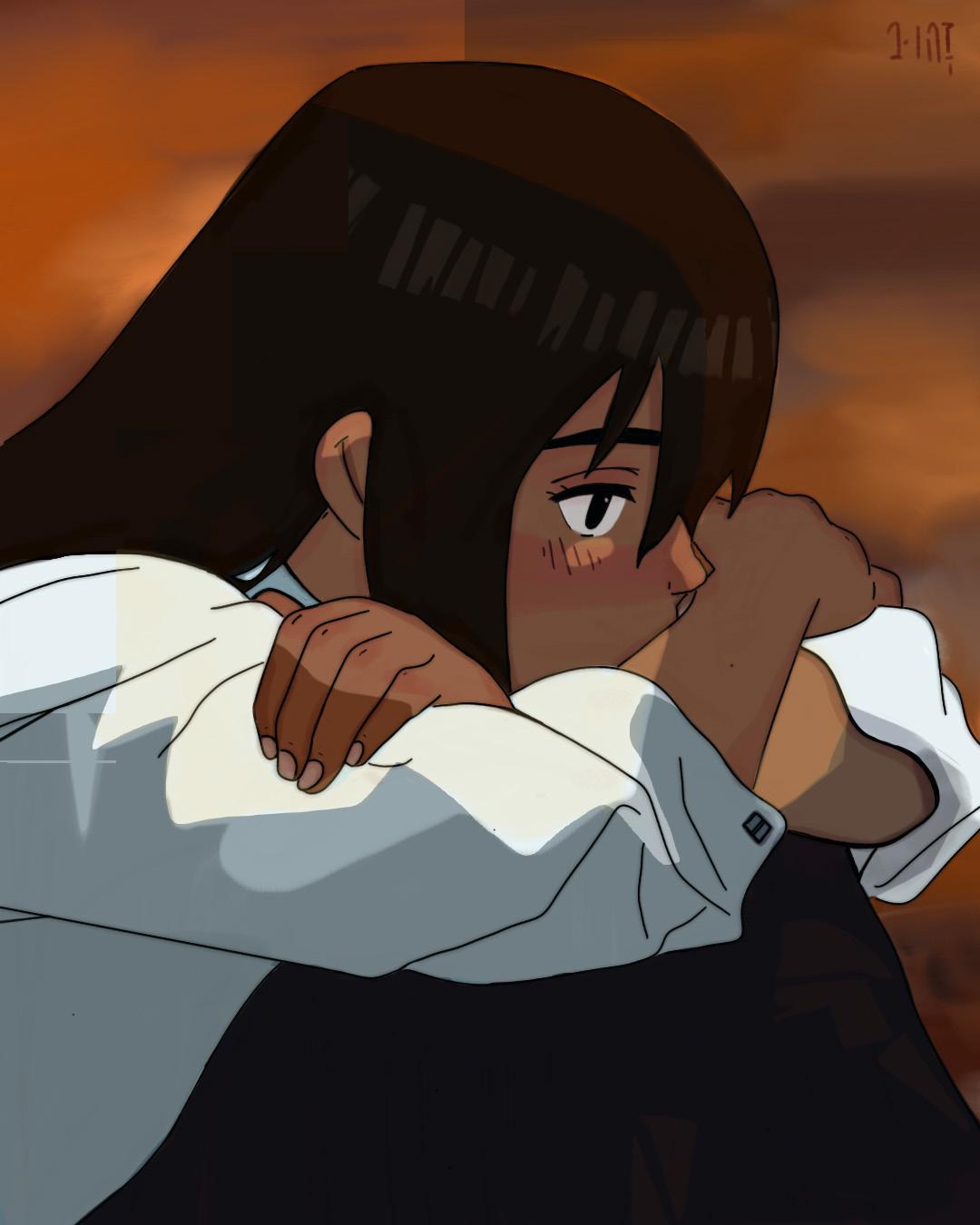
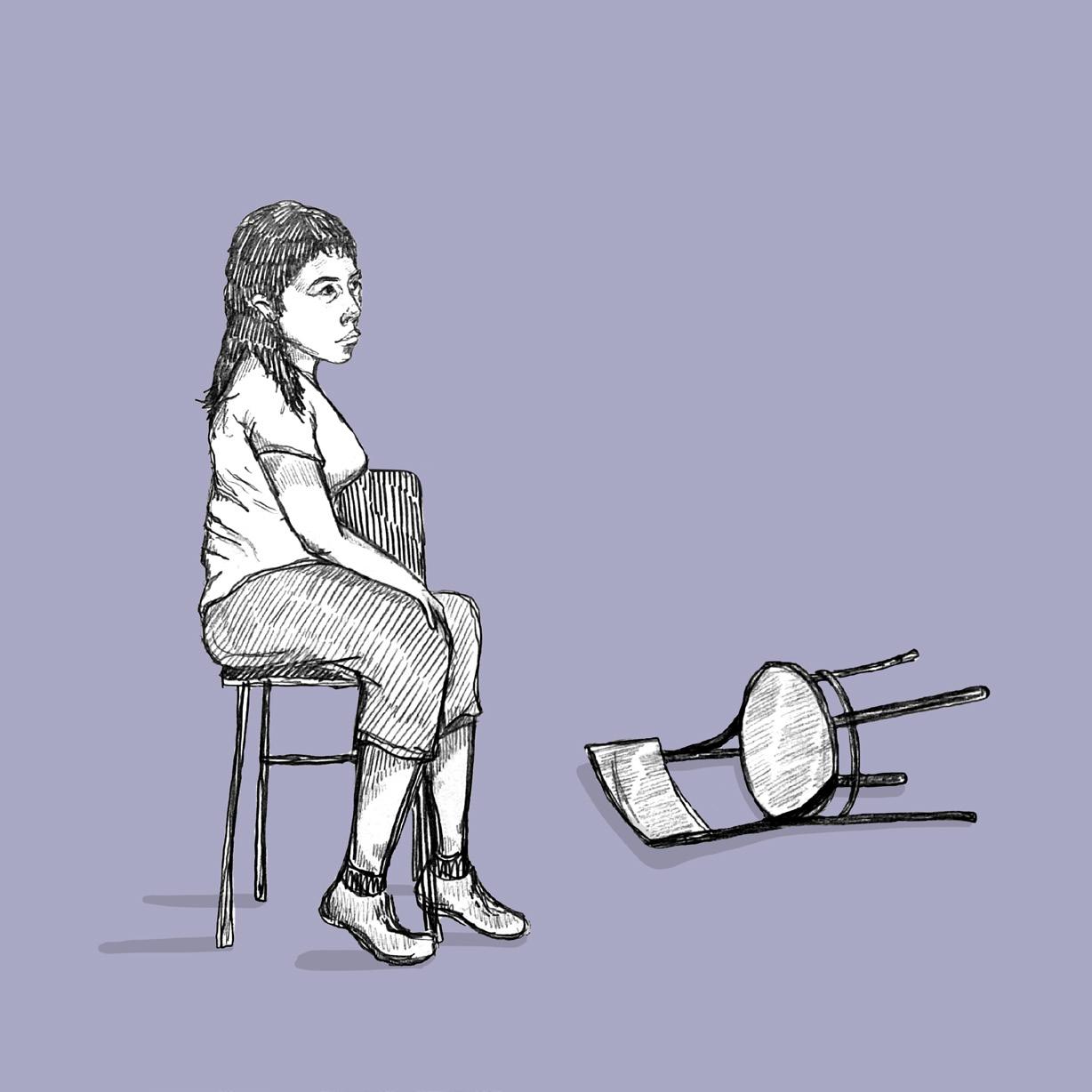
8 THE PLANT
Artwork by Mia Gueli @MIAG.DRAWS
Artwork by @AURRREELIE
Visual Arts by MIA GUELI Visual Arts Editor

 Artwork by Sophia Widell @SOYAGRAPHICS
Artwork by Sophia Widell @SOYAGRAPHICS
VISUAL ARTS 9
Artwork by Ana Sofia Castano @EYEZIART
Dawson Students’ Experiences in the Current Palestine-Israel Crisis
ANGÉLIQUE BABINEAU Managing Editor
The Plant conducted four interviews in an attempt to better understand how the Dawson community has been affected by the recent events in Israel and Palestine. A list of identical interview questions was provided to each interviewee, although not all of their answers could be included in this article. All four interviewees have chosen to remain anonymous for safety reasons. It is also important to note that, although these thoughts, experiences, and feelings might be shared amongst people of certain communities, in no way, shape, or form do these interviewees nor The Plant wish or aim to speak for an entire group of people.
Palestinian student
How are you feeling in a few words?
“I have family in Palestine and I have family in Lebanon, in Syria and in Jordan as well because, you know, Palestinians were displaced. Even Palestinians that aren’t currently connected with their family back home are still affected by the situation. Some people don’t understand why someone would be affected if they don’t have immediate family there, but that’s not the context. We are a community that is connected by our constant struggle and ancestral land.”
“Honestly, I have no idea what I’m feeling. At the beginning it felt shocking, it felt unreal and now I’m just numb, confused, and, honestly, so tired of my people not being heard.”
Has your experience at Dawson - or in general - changed since October 7th?
“A lot of people were anxious about going to school in general because, right now, anti-Palestinian discrimination is very high. The week that everything happened so many people experienced racism, including me. Disgusting things being
said to you, getting these disgusted looks when you’re wearing a keffiyeh to show solidarity, all of that.”
Do you think the media is biased?
“Absolutely. For example, when the media said that [Hamas] beheaded a pregnant Israeli woman and then beheaded her newborn baby. What is sad is that it is true; true as in the evidence was about the Sabra and Shatila Massacre. It was actually an IDF soldier that did that to a Palestinian woman in Lebanon [in 1982]. When [the media] realized that, they removed it, but never talked about it again. People didn’t care after they found out that it was a Palestinian woman. That alone shows that it doesn’t matter what happens, [who dies], as long as it’s Palestinians.”
How informed are you on the current situation? Would you say you have a bias?
“I don’t think I have biases in the situation. With a situation like this, it’s very easy to see who is actually the oppressor. This isn’t about perspectives. This is colonization and genocide and you cannot just pick sides because you feel like it or because you’re not educated enough about the subject; this is real life. This is going to be played as one of the darkest moments in history. Almost 10,000 people have died in the past weeks. That’s a massacre, that’s genocide. And this is only in the past weeks. The only difference is people right now think that the ‘war’ just started, but it’s been ongoing for 75 years and it’s not a war; that’s the most important thing.”
What are the most efficient ways for students to help?
“I don’t think [students] know how powerful their stances are. For example, for South Africa when they did the BDS [Boycott, Divest, Sanctions] in Canada, students actually played a huge role in it. [...] When we protest for example, we put a lot of pressure on the government to the
point where Justin Trudeau started to change some of the terminology he was using before.”
Jewish student
How are you feeling in a few words?
“It’s been very hard to reconcile with my identity as a Jewish person because I feel like, especially in this day and age, you are only a good Jewish person you believe X. That goes both ways; pro-Israel people will say, ‘if you’re not pro-Israel you’re not Jewish; Israel is our home land so you have to believe in that’ and then pro-Palestine people will say that Jewish voices matter when they’re pro-Palestine, so it’s just very difficult to be Jewish and to also have this political stance.”
“The issue of antisemitism is not the issue of pro-Israel or not.”
What did you think about the statement issued by Dawson?
“I found it to be lacking; I think that it could’ve gone more in depth. They didn’t even name the issue; it felt like they basically have a template for difficult political issues. It was just far too vague to even do anything. [...] I know that a lot of people in my community and a lot of people in the Palestinian community felt unsafe coming to school.”
How informed are you on the current situation? Would you say you have a bias?
“I definitely have a bias. I went to a Jewish school and at a Jewish school, you’re really taught to appreciate and value Israel. From a young age, you have Israel Day, you have students from Israel come to talk to you about how great [Israel] is, you memorize the map of Israel. It’s ingrained in that culture so I grew up really thinking that Zionism was a really positive word and that Israel is a great thing. I had no idea about the land conflicts. My mind was still malleable back then, so I definitely internalized that bias.”
10 THE PLANT
“Despite having that bias, I think it’s valuable to understand Israel the way I have been taught. A driving force to why the state was created was because of how horrifying the Holocaust was.”
Jewish student
Have you or your family/loved ones been directly affected by the current situation?
“I’ve always kept myself informed because, even though I’m not personally that attached to Israel, it’s still a country that tries to represent my religion in some ways.”
“I think it’s really difficult to not be biased for any Jewish person because there’s so much history that comes with Israel and like a lot of people have family there.”
“It’s really really difficult not to fall for the propaganda Israel releases because a part of you wants to believe that Israel’s not a bad place. But I also have a lot of friends who are aware that Israel doesn’t represent the Jewish community and that the actions of the government aren’t a reflection of Jewish values in any way.”
How are you feeling in a few words?
“It’s frustrating because I’ll see people I thought I knew pretty well supporting Israel and I’ll just be like, ‘how is it even possible to believe that what they’re doing is okay?’”
“A lot of it comes from the Internet being an echo chamber; whatever you believe will be reflected back to you, validated by the content that’s given to you. It’s also just a reflection of how society works; this is not the first time that stuff like this has happened and that people are completely blind to the reality. I know a lot of my Jewish friends have deleted social media because, if you follow a lot of Jewish people, you’ll see a lot of Israeli propaganda. They want to avoid seeing that because it’s really hard to watch.”
“At the same time, I came to the realization that the fear I have to live
through is nothing compared to the harm that’s being done to Gaza and the people there.”
Has your experience at Dawson (or in general) changed since October 7th?
“I was very very scared that I would face anti-semitism, but I’m not someone who people know is Jewish unless they’re my friends.”
“I have stopped wearing any signs of religion. I have earrings that are [in the shape of the] Star of David that I used to wear all the time. Unfortunately, Israel’s flag is a Star of David and I don’t want people to misinterpret it, but also just as a sign of respect for Palestinian people. It’s [unfortunate] because it’s my religion, I’m proud of it and I love it, but I don’t want to show any sign that could be misinterpreted as supporting Israel.”
What are some important misconceptions about the situation that you wish to clear up?
“I think it’s very important to realize that the actions of the Israeli government do not reflect Jewish people. It’s also important to realize that we need to condemn the Israeli government no matter where you live or what country you identify with. It’s so important to stay critical of governments and higher powers because, in the end, if we let governments control the narrative, if we don’t question anything, then we let go of our power as a population. Even if you want to believe that Israel represents a part of your community, it’s so important to stay critical of and to try to have an objective view on the events.”
Muslim student
How are you feeling in a few words?
“I do feel a lot more self-conscious, not just at school, but in the metro and at work. People have stared at me and I’ve definitely felt more like judgment than before. I don’t think personally I faced that much Islamophobia in my life, but nowadays, I can feel people staring at me.”
Why do you think so many people revert to hate?
“I feel like because it’s the only thing they know. If the military and the governments use hate to get their words across, then the people will learn [...] to use hate.”
“There is hate targeted to Jewish people right now and that shouldn’t be dismissed, but the pain that the Palestinians are going through should be the focus because they are the ones going through a genocide.”
How informed are you on the current situation? Would you say you have a bias?
“I’m Muslim, so some people might think that I have a bias, but I just think that, as a human, it’s easy to see the facts. I feel that anyone who can see the [situation] as it is [...] would come to the same conclusion as me. Maybe I think about it more because I am Muslim, but I don’t think my pain is biased.”
Do you think the media is biased?
“The media is obviously biased. I don’t think conflict is a word anyone should be using for this. Using the word conflict, war, ‘murdered’ [for Israelis] and ‘died’ for Palestinians, it does matter a lot because that’s how someone who is not that educated [will] learn to [view it]. The word conflict minimizes the situation so much; it’s so much bigger than that.”
What are some important misconceptions about the situation that you wish to clear up?
“The people who want justice for Jewish people [should] also be the ones wanting justice for Palestine. We are preaching the same thing and [that is] for no innocent person to die.”
“I just don’t understand how humanity is still so [horrible]; I thought we were in 2023. Everyone’s always talking about justice and peace for so many things, but why not about this?”

11
DOSSIER ON PALESTINE
The Disinformation and Bias in the Media Addressing Palestine and Israel
EMMA CASPI Staff Writer
The crisis between Palestine and Israel has taken over the news and broken hearts, causing much grief and pain to not only those directly impacted, but to people across the world. Moreover, the propaganda, disinformation, and bias disseminated over various platforms have confused and shocked readers.
According to CNN – who is biased, and is therefore only used for base information and looked at objectively – the ongoing crisis gained media attention when Hamas, an Islamist organization whose military wing was created in 1987 as a resistance against Israel, broke through the border walls of Israel on October 7th killing 1300 civilians and seizing more than 200 hostages.
During these uncertain times, many people have taken it upon themselves to spread misinformation and/ or disinformation, political propaganda, and create or share bias in the media.
Their operation is called “Al-Aqsa Storm” which fought back against the Israeli forces. Specifically, they fought back against the Israeli forces who stormed a sacred mosque in Jerusalem as well as the siege of Gaza (which was a blockade of the Gaza Strip). To contextualize, Hamas governs over Gaza and asserts its presence in the belief that they are an alternative to the Palestinian Authority. It is crucial to state that the citizens of Gaza and Hamas are two separate entities.
Israel retaliated by declaring war in which they executed their plan called “Operation Swords of Iron” where they would try to destroy the leadership of Hamas and Islamic Jihad. The Israeli army still proceeds to uphold their naval, air, and land blockade and, in the effort
to bomb the Gaza Strip to sustain the operation, have killed over 8000 with more than 2000 citizens presumed dead. Israel has blocked necessities, such as fuel and water, and the evacuation route set for the citizens was bombed.
Many questions arose surrounding the topic, mainly about what caused such events. There is no one simple answer to the so-called ‘start’ of this crisis as it has been intensifying since May 14th, 1948, the creation of Israel. Therefore, this is not simply a single retaliation, but part of a history that has been ongoing for decades. Neither Hamas or the Zionists however, are justifiable for their actions and devastation. The Oslo accords, which are a pair of agreements between Israel and the Palestine Liberal Organization, were implemented to try and end this prolonged crisis, but the process did not succeed.
During these uncertain times, many people have taken it upon themselves to spread misinformation and/or disinformation, political propaganda, and create or share bias in the media. Such information has been very problematic, especially for those who wholeheartedly rely on these types of media for their news.
The sizable layoff of those who monitor controversial content only exacerbates this cyclical false information. A vicious cycle of unwanted misinformation that is difficult to halt can result from constant misreports. This is what inevitably leads to a rise in antisemitism and islamophobia. Take Wadea Al-Fayoume, a 6 year old American-Palestinian who was stabbed 26 times and murdered by his landlord for simply being Muslim.
Certain people are taking the chance to distort or completely fabricate the words of political officials, create false AI-generated images, and utilize videos out of context. CP24 News provides examples: an innocent video of parachute jumpers in Cairo during September was captioned to seem like Hamas militants were infiltrating Israel. Another realistic clip of an actor lying in a pool of blood that was used as propaganda
has been revealed to be the footage of a short film shot in 2015 titled “Empty Place” directed by Awni Eshtaiwe, a filmmaker from the West Bank, about violence against Israelis.
Bias, just like disinformation, is a pressing issue one should not overlook. TikTok has been flooded with videos captioned #standwithPalestine or #standwithIsrael. Western media is also immersed with biased articles and journalists who are pro-Israel, while Arab media outlets are pro-Palestine. Journalists are breaking their responsibility of objectivity by allowing their biases to leak into their articles.
Bias can be as subtle as using different contexts of words that mean the same thing such as BBC News using ‘dead’ for the victims in Gaza and ‘killed’ or ‘murdered’ for those in Israel. The purposeful variation of these similar words makes the deaths of Israel seem more tragic than those of Palestine. There can also be far more prevalent journalists heavily elaborating on one side’s situation, while hardly paying attention to the other.
A.W. Ohlheiser, a senior technology reporter at Vox, believes that one can navigate deceptive and biased news if one takes the appropriate steps.
Ohlheiser suggests that you understand the platform you rely on: is that platform prone to frequent misinformation or bias? Do they prioritize engagement over reliability? Does a blue badge or verification mean their information is sound and encompassing? You can SIFT: “Stop, Investigate the source, Find better coverage, and Trace claims, quotes, and media to the original context” to know if a source is reliable.
Most important is the role we play in the situation. It is best to refrain from possibly spreading biased or incorrect information if you have an unsteady grasp of current events. The best thing one can do when they are uncertain is to keep oneself informed and shut down those who perpetrate harmful information. Words can do more harm than we think.

12 THE PLANT
DOSSIER ON PALESTINE
STM Under Threat: Collective Transport Models Deemed
Unviable
SIMONE BÉLANGER Editor-in-Chief
Collective transport has been yielding deficits since the COVID-19 pandemic.
The STM deficit was projected at $2.5 billion for the next 5 years, suggesting that public transport’s business models have a long way to go. For the year 2024 only, the deficit was assessed at $532 million. Faced with these significant shortfalls, Quebec’s urban transport companies are urging the Prime Minister to “have more ambition in terms of collective transport.” This critical issue does not solely affect the Société de transport de Montréal (STM), as other municipalities fear that their services will be crippled as well.
On October 27th, the Minister of Transport and Sustainable Mobility, Geneviève Guilbault, announced the CAQ government’s intention to absorb 20% of transport operators’ deficit by 2028 with an aid of just over $500 million. In that case, cities would have to assume the remainder of the cumulative deficit: the infamous $2.5 billion over 5 years. This decision was not favourably welcomed by public transport users, worried about the reduction in services forecasted by the STM, notably the subway closure at 11 p.m., which would affect thousands of workers and students. Other measures, such as the metro opening at 9 a.m. on the weekends, a decrease in subway train and bus numbers, a 33% decrease in frequency of passage for night buses, and an increase of the target number of users per bus by 10, were also likely to be deployed. Guilbault responded to the rising discontent at a press conference, claiming that the provincial government was still discussing with municipalities.
Soon after, collective transport organizations’ presidents voiced their thoughts on Quebec’s decision, deeming it outrageous. “Today, we are calling on the Prime Minister of Quebec and [Eric] Girard, Minister of Finance,” stated the president of the Réseau de transport de la Capitale, Maude Mercier Larouche during a media scrum held in Quebec. “For us, it is unthinkable to think about cuts in service. We do not want to level down,” she insisted, recalling that “85%, even 90%” of the operating costs
of transport companies are linked to providing services to the population. “If we cut, it is necessarily a bit like saying that we are sawing off the branch that supports us.”
Facing massive backlash, the CAQ’s government decided to reconsider, and released their final offer on November 3rd, when Guilbault declared that Quebec would absorb 70% of public transport companies’ deficit in 2024. The mayors of the Metropolitan Community of Montreal (CMM) manifested their appreciation for Quebec’s commitment in taking on 70% of the shortage. However, they urge the government to base its calculations on real deficits, values which remain largely disputed. Nevertheless, it becomes increasingly obvious that Quebec will cease providing if the deficits are not curbed throughout the next few years. Guilbault indeed asserted: “We can’t just put endless money into these deficits. We need to look at ourselves, restructure financing and find ways to save at source.”
But why the deficits? The principal source of these shortfalls is the drop in ridership assessments. Following the pandemic, multiple professionals adopted telework, depleting the demand for public transportation. In the fall of 2022, the STM had regained 70% of its pre-2020 ridership, a value nonetheless insufficient for the company to generate profits. 2023 data has yet to be published, but the lingering of teleworking, however, has meant that ridership in downtown Montreal remains lower than the network average, and that pre-pandemic targets are far from concretization.
Furthermore, the need to rethink public transport enterprises’ business model is crystal-clear. STM execu-
tive director Marie-Claude Léonard agrees; their financing strategy must be reviewed. “The model no longer works,” she said in an interview with Radio-Canada this May. “Expenses are piling up faster than revenues, and we must review the financial framework with our partners to achieve our ambitions regarding public transportation.” The CAQ government is also planning on investigating transport companies’ management, and intends to impose performance audits on the 10 transport companies as to reduce their structural deficits.
The salary of STM executives is an additional matter of debate. General administrators receive between $310,000 and $415,000 yearly, including benefits and pension plans. In 2022, Léonard’s salary was $415,000, a much greater amount than that of all other municipal functions. For instance, Mayor Valérie Plante’s salary was $194,372 in 2022. Despite the funding crisis, critical deficit, and decrease in ridership, transport companies have offered major remuneration increases to their senior executives between 2019 and 2022. Within the STM, increases ranged from 1.6% to 15.5% in 2022—a questionable tendency, especially when knowing that without provincial aid, collective transport would crumble.
As of now, the measures that the STM will implement are yet to be determined. The situation is most likely to unravel throughout the following weeks. Ultimately, it remains crucial to critically evaluate the internal management practices of collective transport companies, no matter how tempting it is to blindly point a finger at the CAQ government for not entirely absorbing the deficits.


13
Photo VIA MONTREAL GAZETTE
NEWS
Scorsese’s Killers of the Flower Moon and the State of Native Cinema
THOMAS FRENETTE Arts & Culture Editor
Author’s note: This article contains spoilers...
Killers of the Flower Moons, based on the novel written by David Grann, was announced by Martin Scorsese to be his last film. It is a period-piece on the Osage Reign of Terror in 1920s Oklahoma, which saw the anguish of the Osage communities at the hand of white interlopers who employed murderous means to secure the headrights to the oil-ridden plains.
I wanted to see the film because of my appreciation for Scorsese’s cinematography and personality—yes, I do agree that Marvel’s cinematic universe is comparable to attraction theme parks. I expected to reconnect with Taxi Driver’s idealistic, misguided, and lonely quest to self-discovery, King of Comedy’s meditation on humor and moral questionability of the rise to notoriety, and Goodfellas’ entertaining clique of night crawling bruisers.
However, as I walked out of the theater, the themes and characters I had engaged with in his previous films seemed inconsistent with Scorsese’s new production—the plot was away from New York, away from the mobster worldview…As a matter of fact the only recognizable markers in the film for me were the presence Leonardo DiCaprio and Robert De Niro. So what is the big deal of making it last three hours? And why choose him to direct a film on indigenous events?
As I rummaged through article and video essays online, it became increasingly obvious that Scorsese was an excellent pick. His masterful nuance of trust and betrayal, acute descriptions of the inner machinations of men, and the banality of white supremacy told through the white man’s perspective reflected the historical implications of the Osage massacre. The respect he has accumulated in cinephile circles during his half-century career also contributed to drawing in all types of people to the big screen.
An Osage director would no doubt fail to attract as large an audience, but the concession of commer-
cial success did not translate to the neglect of Osage voices. Native actors include Lily Gladstone (Mollie) of Piegan Blackfeet and Nez Perce heritage, Tantoo cardinal (Lizzie Q) of Cree and Métis heritage, Cara Jade Myers (Anna) of Kiowa and Wichita heritage and Tatanka Means (John Wren) of Oglala Lakota, Omaha, Yankton Dakota, and Diné heritage. The late Robbie Robertson, who composed the soundtrack, is of Mohawk heritage and has scored ten of Scorsese’s films including The Wolf of Wall Street and Raging Bull.
In preparation for the film, Scorsese collected the concerns and insights of the Osage community and the Osage Nation Chief Geoffrey Standing Bear to review his intentions and ensure nuances of Osage culture would be handled with reverence in the film. As a result, the film benefits from a sense of realism in the events and conversations to form—perhaps for the first time in a film of this caliber, some critics and Native community leaders would argue—an accurate portrait of Native people in terms of the Osage language, regalia, and traditions. Christopher Cote, the Osage language consultant on set, said “not being Osage, I think [Scorsese] did a great job representing our people.” Jim Gray, a former chief of the Osage Nation, said “I’ve never seen a movie immerse itself in a culture like this film did with ours.”
However, a critique of the film is the emphasis of Ernest’s (Leonardo DiCaprio) perspective and the humanization of his character through his love for Mollie (Lily Gladstone) despite his active participation in the murder of her family. The violence
against Indigenous communities is so normalized that it avoids sensationalism and makes the matters in play much more harrowing, even in the banal conversations between Ernest and his uncle Hale, which frequently treat the Osage people as living piggy banks to be destroyed and looted.
When the men first reunite, Ernest unpacks his psychological makeup, which is dominated by a love for money, alcohol, women and the determination to acquire these by any means necessary. While the development of Ernest’s naive character compromises an adequate depiction of the paranoia of the Osage people as they are slaughtered in shops, in the streets, and even in their homes, it allows for Scorsese to hold up a mirror in front of society and say, “It is this easy to be complacent of these evil and discriminatory crimes; this is what humans are capable of doing if left unchecked.”
Fortunately, the end of the film finds us in a place of hope. The rejoicing pulse of the Pow Wow testifies to the survival of the Osage people in the face of violence and racism. It ought to serve as a catalyst for other cultures with histories of oppression to engage in a dialogue of reconciliation and press critical moral questions.
Employing one of its most celebrated film directors is a significant progress in American culture to engage with the process of carrying Native ancestors’ Sisyphean task of struggling to become more visible and heard. The success of the film in Native and non-Natives audiences is a promising milestone in the direction of Native cultures being able to express themselves on the big screen.

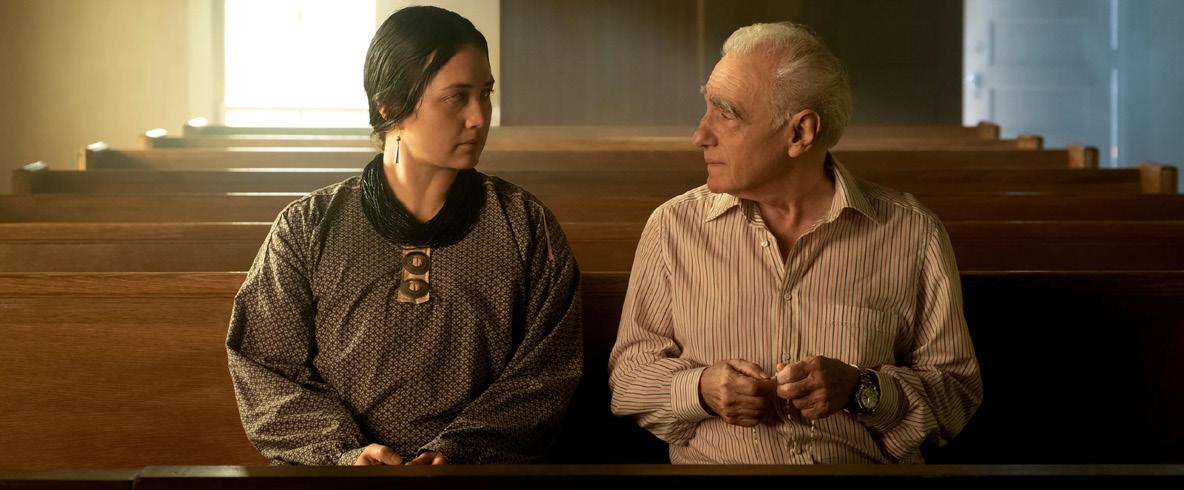
14 THE PLANT
Photo VIA APPLE
ARTS & CULTURE
SMALL EVENTS
À SOIR ON FAIT PEUR AU MONDE
Where: La Cinémathèque Québécoise
When: November 29 at 6 p.m.
Price: 11$
The late François Brault, remembered for his fondness of Quebec’s culture and heritage, produced this documentary centering around the revered icon Robert Charlebois. The flair of Garou’s personality is flaunted in his appearance at the Olympia in Paris, in various shows performed in Canada and words from conversations with his friends and family.
“GLADES” EXHIBITION
Where: La Guilde
When: Until November 19
Price: Free
Once Head of the Ceramics Department at Concordia University, Jean-Pierre Larocque carves ceramics and charcoal into large anonymous heads, horses carrying mysterious baggage, and curious vessels. The exploration of metamorphoses are concerned with the transient and feature costumes and masks from many epochs, yet always managing to evade the easy explanation.
HEAVEN FOR REAL, WITH POOLBLOOD AND 36?
Where: Café Cléopatre
When: November 18 at 8 p.m.
Price: 22$
Heaven for Real’s rhythmic bubbly art rock, poolblood’s melancholic and unplugged folk feel and 36?’s woozy, almost cartoony eloquence tag team for the M for Montreal MARATHON music festival, which rallies some of the best artists from the Canadian independent scene to Montréal’s most authentic venues.
SWORD II, WITH STEVENSON AND TERNET
Where: Bar le Ritz
When: November 19 at 8 p.m.
Price: 22$
Allying dense layers of static, compressed drum pad crashes, and interchangeable angelic and gritty vocals, Sword II shows impressive versatility and sound design that unite to create a distinct sound. Their first album, Spirit World Tour , is a beautiful project that pushes their creative endeavors even further and confirms their unique talent.
Curated by THOMAS FRENETTE Arts & Culture Editor




15
Photo VIA CINÉMATHÈQUE
Photo VIA LA GUILDE
Photo VIA SONGKICK
Photo VIA @SWORDII2
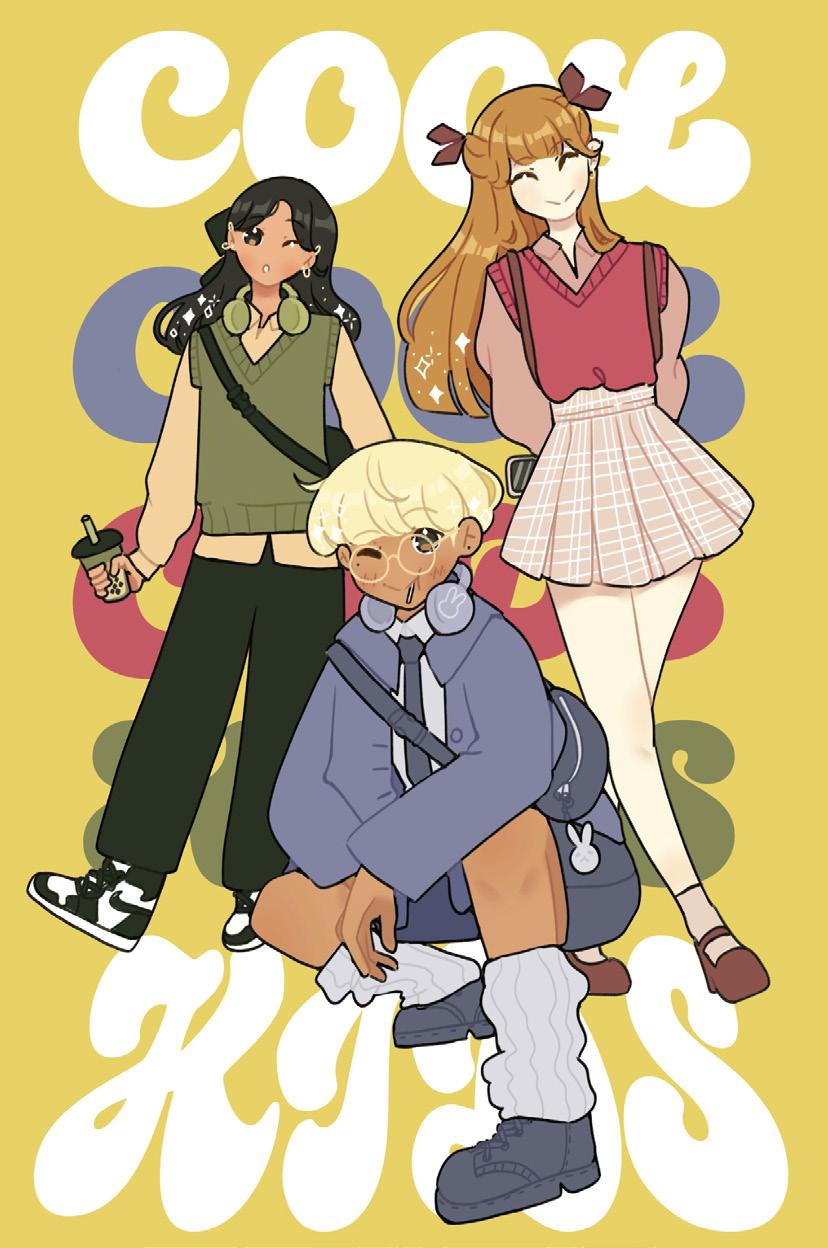
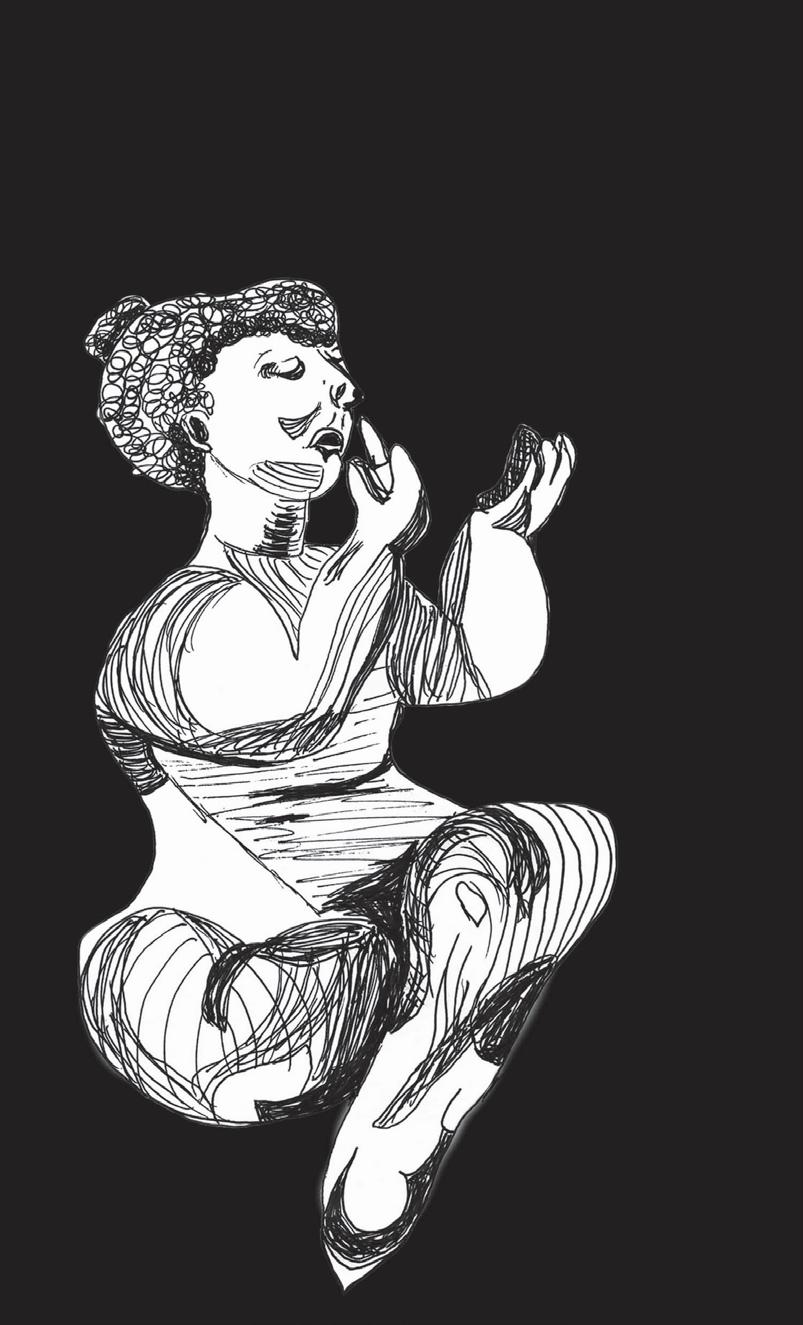
VISUAL ARTS 16 THE PLANT
Artwork by Jeanard Saberon @UKERUKAERU
Artwork by Kenzie Sproule @ SPROULE.DESIGNS

 by MIA GUELI Visual Arts Editor
by MIA GUELI Visual Arts Editor
17 Playlist
PLAYLIST
Huffing and Puffing: Bringing the Tobacco Industry Down
EZRA BUCUR Staff Writer
In the fiery summer of 2023, the provincial government announced a new law: as of October 31st, flavoured vapes will be banned. By the time this issue will be out, the ban will have already been applied. Modifications will be made to “Vaping paraphernalia” in hopes that it will be perceived as “less attractive” to potential clients. Christian Dubé, Quebec’s Minister of Health, explains the decision as a way to dissuade young people, especially minors, from consuming nicotine products. With this decision, Quebec will follow New Brunswick, Nova Scotia, and the Northwest territories.
In the Institut de la Statistique du Quebec’s annual Health Report Card, despite cigarette smoking behaviours declining, vaping has been on the rise amongst young people. In the 15-24 age range, 19% reported vaping in the past 30 days, and 9% use vapes either “daily” or “almost daily”. This contrasts with the general population, since only 6% have used e-cigarettes in the last month, and half of that group only uses them frequently. This is not a coincidence since vaping companies gear their advertising towards kids. Due to the lack of regulations, companies such as Juul were able to sell their products as a healthier, cooler alternative to the tired old cigarettes.
Health experts have applauded this law, due to vaping’s health risks. Neil Johnston, president and CEO of the Manitoba Lung Association, urges other provincial governments to examine this issue closely, and perhaps put in regulation similar to what we have in Quebec.
What was unexpected, however, is the pushback that came from some advocacy groups. The New Brunswick manager of the Anti-Tobacco Coalition, Kristin Farnam, believes that the flavored vape ban instituted in September 2021 was not as effective as it was supposed to be, blaming vape shops for not properly implementing the new regulations. In the province, youth vaping rates are
unfortunately still rising.
Smokers and vapers are also unsure of the law’s efficiency, specifically when it comes to making people quit. Dawson College claims to have a smoke-free campus since 2018, yet the infamous “smoker corner” still remains. It is still heavily frequented, and sometimes the smell of cigarettes can even seep its way inside the building from the Maisonneuve entrance.
They assert that all this will do is create an illegal market or have people travel to other regions where flavored vapes are still legally sold.
A former 19-year-old Dawson student, who wishes to remain anonymous, maintains that the only way for a smoker to truly quit is if they personally want to themselves. Ultimately, no ban by the government will be able to make someone quit if they do not want to. She began vaping at 17 years old, but purchased her first vape legally at 18. While she concurs that the flavors played a part in her shift from cigarettes to vaping, it was not what maintained her habit. In her opinion, it is more convenient compared to smoking, since you can do it anywhere at any time. Even if vaping may seem that way at first, it quickly becomes a costly activity. It is also harder to track how much you vape, as it is impossible to visualize it compared to cigarettes. However, she does not believe a ban is the answer. She believes in a less aggressive solution, where young people are educated about the risks and health consequences of vaping. Additionally, she believes addressing the underlying causes behind vaping, such as anxiety or depression, could help decrease rates. She points out that when quitting, one can feel closed off from their close friends who smoke, even if there are no external pressures. The addiction never truly disappears and it all boils down
to one’s willpower. She says she will gravitate more towards cigarettes as a result of the ban, since the amount consumed can be monitored better than with vapes. However, she does have intentions of quitting altogether eventually as it has impacted her health significantly.
In another interview, a 19-yearold student in Dawon’s Social Service program redirects the conversation to pressing social issues. They believe this ban came too late, as many young people who started vaping back when vapes first came out are now adults who can legally purchase tobacco products. They assert that all this will do is create an illegal market or have people travel to other regions where flavored vapes are still legally sold. They began vaping at the age of 14, with an e-cigarette purchased by an adult and have not quit ever since. However, in their mind, the flavours were more of an “added bonus.” Since they have no intention of quitting, this ban idea falls flat. If the Quebec government wanted to do something about addiction, they believe that the government should invest more money into social services, pay their workers, and also address other underlying causes, such as homelessness.
This is not the first time a narcotic product has been banned, nor will it be the last. Will teenagers finally give it up and go back to a tobacco free lifestyle, or will this ban only create a massive gap for contraband sales? While historical examples such as the Prohibition could help us determine the answer to that question, only time will truly be able to tell.

18 THE PLANT
A Dive in the Past: Dawson College in the 70’s
GLORIA BADIBANGA Staff writer
Dawson College officially opened its doors in the fall of 1969. André H. recalls the campus initially being located at 350 Selby Street; a converted pharmaceutical factory in Westmount. André is a Dawson alumni, who was part of the Electrical-Tech program, first stepped foot into Dawson in 1972, before graduating in 1975. His reasoning behind choosing Dawson was relatively straightforward; to him, the college was, at the time, the only available option to his hometown of Granby, which he describes as a “hick-town” in comparison to Montreal.
While he attended Dawson, about 3000 students also frequented the College, which amounts to almost a quarter of the College’s current population. He personally did not feel like the school was overpopulated nor dense, a statement with which many Dawson students today would not agree. Perhaps this can be explained by the fact that, during his years at the school, Dawson consisted of several buildings in addition to the main campus on Selby street; similar to how the college currently utilizes the Forum as an alternative location for classes. Chemistry and Physics were held in the main building, while smaller classes, such as Humanities, took place in an apartment block on Saint-Antoine Street, about two blocks East of the main campus. Computer courses were given at 4333 Saint-Catherine Street, commonly known as the Air Canada Building. However, André states that it was more like a Reader’s Digest building, due to the sign in front. For André and the other students in his program, Electrical-Tech classes were held in a building on Couvent Street. The current distance between Dawson College and the Forum is nothing compared to the distances between the primary and secondary campuses back then. André recalls students complaining about the classes being far from one another.
Concerning student life on campus and extracurricular activities, André kept to himself — although, recollecting that there was not much room for social gatherings nonetheless. The caf-

eteria was where most social gatherings would take place, making it a popular spot on campus. The cafeteria was rather small, and standing in an enclosed space with a 12-foot ceiling merely was not of his interest — for which I cannot blame him for. André also shared that during his time attending Dawson, drugs, marijuana, and dope were the people among the youth, which is something that he was not interested in, giving him another reason to keep to himself and his tight circle of friends.
The 3000 students making up Dawson at the time came from all over the province of Quebec. André recalls meeting a friend who came from a region far up North, a region which he was not even aware of prior to that exchange. According to André, there was not as much diversity at Dawson compared to the current student demographic. There were no international students to André’s knowledge — if any, there were very few, since he never heard about any attending the school. André remembers a high number of Italians students, but very few Black or (especially) Latinx people. He described the students at Dawson who constituted the majority of the population as the “typical North-American white man or woman.” There was very little cross-culture in the school’s environment, which is not the case anymore as the college has a variety of events throughout the school year celebrating an array of cultures, ethnic backgrounds, and religions.
One of the downsides or unfortunate things about Dawson for André
was the lack of outdoor spaces — a “lousy campus,” as he describes it. For instance, there was nowhere to sit under a tree. Most students had no other option, but to hang out inside of the building. The Selby campus was shaped like a square, with plenty of buildings surrounding it, leaving little to no room for outdoor campus space.
When asked if he would do anything differently, André stated that, if he had to do it all over again, he would try to be more outgoing and more receptive to other people’s ideas, exploring them rather than shying away from them.
As words of advice for any current or future Dawson students, André emphasizes the importance of not being afraid to ask questions in class. If you don’t understand something: ask, do not pretend. “Don’t pretend to understand because that’s where people go wrong. People go wrong because they think they understand. They are not quite sure but they go about it as they see it, but that might not be the correct way to go,” he says.
Even though 350 Selby Street, once known as the first home to Dawson College has now been turned into a luxury residential complex, it still remains a crucial part of the memory of many of Dawson’s first students. I am sure many alumni, like André, remember this time as synonymous with new experiences, newfound independence, growth, and impactful — just as we will decades after we graduate.

19 VOICES
Photo VIA MONTREAL GAZETTE
Preserving Diversity: The Imperative of Defying Monopolized Fashion Trends
SARAH BENSETITI Secretary
The famous Misa Amane from Death Note and Nana Osaki from Nana left me utterly captivated by their distinct fashion sensibilities in every episode. The allure of their alternative, goth, and punk-inspired styles introduced me to a realm of self-expression I had long yearned for. I ardently aspired to one day see my wardrobe mirror the enigmatic charisma that they effortlessly exuded – however, prevailing beauty standards (oh, the famous galaxy wear!) had long suppressed the embrace of such edgy fashion. It was not until the onset of the pandemic that I finally found the freedom to fully explore and embrace these alternative fashion styles. And we should not let that open-mindedness disappear in favor of monopolized fashion.
One can barely fathom the exhilaration that surged within me as I witnessed the growing embrace of alternative styles. Perhaps I had spent my formative years in a rather close-minded milieu, where goth fashion was unfairly stigmatized as a pact with the devil, and donning an abundance of black attire was hastily labeled as an indicator of “depression” – as cringeworthy as that notion may sound. Consequently, observing the progressive acceptance of goth, alternative, and punk subcultures felt like an extraordinary liberation, akin to finally being given the freedom to unabashedly be myself.
So, in the year of 2020, as I eagerly opened my Instagram, I often found myself, like many, irresistibly drawn into an endless scroll, captivated by a multitude of individuals who sported thick eyeliner, adorned themselves with silver chains and rings, and proudly donned the iconic Damned-318 Demonias. For the first time in my 15 years of consciousness, an increasing presence of alternative styles was perceptible. It was finally not damned to be seen like this – it gradually became more “normalized,” thus diminishing the intimidation associated with adopting such a style of dress. And for that, I can especially thank TikTok.
The pandemic was awful, but the confines of isolation provided a liberating canvas for sartorial aspirations, allowing me and, perhaps many others, to finally don the clothing we had long
admired, but never dared to wear. In this newfound space, I could authentically express myself through the garments I had so eagerly desired. Moreover, TikTok further ignited that longing, as it succeeded in turning into a trend what had previously been marginalized and stigmatized.
But as I observe the fashion landscape today, there appears to be an overwhelming fixation on relaxed monochrome 90s minimalism and the Y2K phenomenon. As a consequence, various styles like alternative, goth, punk, dark and light academia, cottagecore, fairy grunge, coquette, and many others begin to fade into the background. When we allow a single style or a select few to monopolize the red carpet and deem them as the epitome of normality and trendiness, we inadvertently alienate the rest.
I hold nothing against the allure of 90s minimalism or the nostalgia of Y2K fashion. In truth, I harbor a deep admiration for all forms of clothing expression. Even if I may not personally embrace them, I wholeheartedly appreciate their charm when adorned by others. There is an undeniable beauty in the act of wearing precisely what resonates with your soul, as though each outfit unveils a beautiful fragment of your true self.
However, this is precisely why we cannot allow the prevailing trends to obliterate what the pandemic era had painstakingly cultivated: a newfound respect and admiration for all fashion styles, whether underground or mainstream. The open-mindedness in the world of fashion that marked the year
2020 was a source of solace, finally granting us the freedom to authentically embody the person some had long aspired to be. I thus refuse to stand idly by as this sense of acceptance vanishes into obscurity. After all, beyond these words, there exists someone yearning to be embraced for who they are regardless of their choice of attire – and they are entitled to that.
This article serves as a modest exploration of the significance of both the presence and the wholehearted acceptance of a diverse array of fashion styles. The more we marginalize certain styles, the more likely people adorning “underground” clothing are unjustly subjected to stereotypes which fuels the ease with which they are made to feel unaccepted. When my friend and I step outside in our platforms, bold eyeliner, and corset tops, we regrettably brace ourselves for disdainful glances and unwelcomed, inappropriate comments. Many of those I have encountered feel compelled to negatively comment on my attire, with some audaciously suggesting that I resemble a maid and owe them service (yikes!). Thus, by dressing in a manner that makes us feel most at ease, we paradoxically find ourselves feeling uncomfortable…
This irony underscores the importance of shifting our focus away from the monopolization of fashion styles. Instead, let us truly embrace fashion in all its myriad forms, recognizing it for what it is—an authentic expression of who we are. Never should such personal expressions be diminished to appease a fleeting notion of “normality.”


20 THE PLANT
Photo VIA GLAMOUR
Tuition Hikes: Navigating Legault’s Nationalism
MIRREN BODANIS Voices Editor
Our government is strange. We can all relate to the complex connotations of a response of “oh my GOD, why?” from a progressive Quebecer to Legault’s latest policy. A mix of fear, anger, confusion, hatred, and exhaustion. It is a seemingly monthly tradition that the CAQ enacts some unfortunate policy: no more religious head coverings for public sector workers, increasing the proportion of french-language CÉGEP courses at the cost of other language courses, replacing high school ethics class with “Culture et Citoyenneté Québécoise,” immigrants being unable to receive government documents in their own language after a period of six months, and, most recently, the increase in tuition for English universities for out-of-province and international students.
This last move has proved particularly inflammatory for both francophone and non-francophone Québecois. Both anglo and franco media outlets have been running bold headlines covering the population’s outrage over how the legislation will massively hurt the economy of Québec (especially of Montréal), reduce the diversity of our cities, ruin the international reputation of universities, and further a dangerous cost-of-living trend in a province that has been known to have amazingly affordable post-secondary education.
All of these claims are well argued and make a lot of sense, so what is the government’s counter? Like with all of their other controversial decisions, the CAQ claims the tuition raise will protect
the French language.
First, it is not clear whether or not French has actually been on any decline in Québec. The most recent major research on this subject is the 2021 census, which says that between 2016 and 2021 the number of people who speak French at home actually increased, but their proportion within the population decreased (from 79% to 77.5%.) That is certainly not a dismissable amount, but to take it at face value would ignore another important detail of the report. The proportion of people who speak English at home increased by only 0.7%. It is clear that the language demographics of Québec are not undergoing an anglicisation, but a diversification. The other 0.8% of French loss is made up by allophone gain. This idea is affirmed by Éric Caron-Malenfant, who cited “migration factors” (immigration) as the major factor in the increase of allophones and anglophones in our province.
According to the president of the Association for Canadian Studies Dr. Jack Jedwab in an interview with The Gazette, there are also many unscientific aspects to the way Statistics Canada conducts research in Québec. They note how the francophone sections of the census report focuses exclusively on people with French as a mother tongue, while the anglophone half lumps together people with English and English & other languages as a mother tongue. Additionally, much research on anglicisation is conducted on the island of Montréal, which conveniently includes anglophone suburbs 30 kilometers to the West of downtown, but not the predominantly french South Shore only a couple kilometers off the river, or the mostly francophone city of Laval, which

has a population comparable to that of Québec city.
So as hard as they try to spin it otherwise, anglophones are not really the issue when it comes to the “safety” of the french langues. The tradition of nationalists identifying as a minority marginalized by anglophones in Canada has long been a part of Québec’s history. One of the most historically significant texts of Québec nationalism is literally called Nègres blancs d’Amérique, written by Pierre Valllières. Although the book presents more of a pro-Marxist argument than anything else, it is not hard to see the inherent problem with Québec; the product of a white supremecist European colonial project built on the land of slaughtered Indigenous people arguing that a socialist revolution would benefit their nation by comparing themselves to literal African slaves.
So back to the tuition hikes. It sucks for everyone. It is a punitive measure: they are not making French universities cheaper, they are making English universities more expensive. But it’s not Québec’s anglophones who’s tuition is going up. Québec is the province, dare I say the nation, in North America with the most affordable (and some of the best) university education on the continent. The people who will be disadvantaged the most by this law will be immigrants, especially BIPOC immigrants.
And isn’t that who the CAQ has always targeted? Banning religious symbols and clothing in the public sector, refusing to provide non-French documents after six months, systemically forcing fewer allophone language courses in CÉGEPs; these are all laws that disadvantage already marginalized, racialized people more than anyone else. As much as they talk about anglicisation, what they call the “decline” of French in Québec is really just the diversification of our province. They are not scared of the French language disappearing, they are scared of other languages existing. Xenophobia is the CAQ’s strategy. Never before has it been clearer than with the tuition hikes that Legault’s nationalism is not one of empowerment for his own people, but of violence towards others.
There is absolutely room for nationalism in Québec. But that has to mean fighting for a better nation, not a privileged one.

21 VOICES
Photo VIA CTV NEWS
On the Treatment of Our Elders: The Mistreated and the Forgotten
SABINA BELLISARIO-GIGLIO Science & Environment Editor
The Western world’s curiosity turned obsession regarding youth and beauty has led to many technological advancements and scientific discoveries, but what happens when the inevitable does happen? Despite representing a large portion of the population, the arbiters of change so we can live in the society we have today, our senior population is abused, ignored, displaced, and pushed aside. I wanted to understand when this started, why it is such a growing issue in Quebec, and if there is still hope that it could change. I enlisted the help of Professor Cindy Mitchell, a teacher in the Social Service department at Dawson, and Melissa Young, a Health Science student at Marianopolis College, to answer some of these questions and to better understand the nature of these pressing issues.
There has always been an emphasis on the ability to work in our society. Especially as one built on capitalism, our worth is placed on how much capital we can contribute to our family and society. This has always disproportionately affected homeless people, disabled people, and our senior population. It is easy to be tossed away from society when you are no longer deemed an active contributor to the intricately laced social branch that makes up our communities, cities and countries. The Canadian Encyclopedia defines the transition into aging “by the individual’s relation to the economy,” which explains why seniors are categorized as those of over 65 years of age. Typically, these are the prime retirement years where workers are allowed to begin collecting their hard-earned pension that will hopefully last them the rest of their lifetime. What sounds simple on paper is riddled with systemic problems in and outside of the nursing home systems, both public and privately owned.
The fear of aging has caused our society to despise those who embrace it.
The history of elder care and aging begins with Ignatz Leo Nascher,
an Austrian-American medical professional. He coined the term “geriatrics” in 1909, admitting that gerontology is “a specialty of little definition and less appeal.” He goes on to describe these patients that suffer from the “disease of aging” as practically “useless” and “economically worthless”. The world of geriatrics, or simply positions working with the elderly, are not sought after due to the nature of the work; Forbes reported that there’s “one trained geriatrician for roughly every 7,500 seniors,” despite 55 million Americans being 65 years old or older. Professor Mitchell explained that while going to school, there was a lack of attention in terms of working with the elderly and a larger focus on demographics such as children, teens, homeless, or mental health. While aspiring to have a career, especially something critical in the medical field, there will always be a question of pay.
An issue in geriatrics is the lack of staff due to inadequate monetary compensation. Mitchell also comments that “usually in professions where there are predominantly women, the pay skill is quite low and [in caregiving roles], the pay is also pretty low.” Chen Medical reported that “geriatricians make an average of $20,000 less yearly than internists who did not complete specialty fellowship training. Additionally, geriatric specialists must endure medical school debt, licensing and certification fees, and lower pay throughout fellowship training.” This leads to a lack of staffing and sometimes the displacement of residents out of their homes, which was the case for CHSLD Floralies-De-Lasalle. The decline in staff can lead to many issues for the residents, something Melissa encountered at the residency she volunteered at. She recalled how, at 17 years old, she was in charge of playing games and entertaining the residents. She noticed how one person, in particular, was covered in clothing soiled with food and dirt, looking visibly uncomfortable. She explained that due to health issues, the resident could not communicate their needs and that, “the staff weren’t that accommodating with them because there weren’t many of them.” This raises concerns about why these essential and valuable human lives are not being accommodated.
While other countries, such as Japan, are assessing their response to a growing aging population, Canada is
behind that curve. Japan presents the ideas of “confucianism” into practice. Akiko Hashimoto, a Japanese-American sociologist, remarked that when the elderly population made up 18% of the population, Japan began by “consciously and formally [revising] the perception of an image of older people.” The Western approach to aging is often ageist and reactive. The shame that comes alongside aging is perpetuated by Western culture’s fetishization of youth and beauty. The beauty in aging is lost among the sea of society’s fantastical anxieties within rows upon rows of anti-aging creams and cosmetic procedures.
The pandemic opened the carefully concealed cracks within the system of CHSLD and privately owned homes.
The firing of Lisa Laflamme, at least in my mind, was the moment I realized no one is exempt from ageism’s reign of terror. The fear of aging has caused our society to despise those who embrace it. Melissa noted something particular during her time as a volunteer, recounting that her co-worker, not native to Canada, remarked to her how geriatrics and the system of putting the elderly in homes was particular to Canada and Quebec. Within Chinese, Confucian, Buddhist, and Daoist ideals, many practice filial piety, which is the respect one should exhibit towards their ancestors, parents, and elders. Her co-worker explained that their norm was to take care of the elders in their family rather than stowing them away.
The pandemic shed light on the terrors elderly people faced while locked away in these residences. The Canadian Institute for Health Information reported that “while Canada’s overall COVID-19 mortality rate was relatively low compared with the rates in other OECD countries, it had the highest proportion of deaths occurring in long-term care [at 81%].” The pandemic opened the carefully concealed cracks within the system of CHSLD and privately owned homes. Their non-compliance and deployed preparation in these care facilities are being investigated under a lawsuit. The case alleges that the Quebec government’s
22 THE PLANT
failure to implement a pandemic-response protocol at the beginning of January 2020 impeded the health of residents resulting in almost 4,000 deaths. An outcry formed, especially in the United States and Canada, for our seniors as the news finally began shedding light on the severe levels of isolation and neglect residents were facing. However, once the pandemic slowed, everyone put down the signs and pitchforks and went home. “This is not a trend,” Professor Mitchell urged, “this is a human reality.”
These effects are still lingering post-pandemic, especially in our emergency rooms. The Montreal Gazette reported that the average wait time for an elderly patient in an ER stretcher “jumped by more than six hours to 27.9 [in 2022-23]”. This level of negligence is unacceptable and disheartening. Melissa also noticed, after volunteering at a hospital right after the pandemic, that the effects were still present. “A lot of internal issues that were not addressed for each patient,” she said, urging that the government needs to begin hiring more qualified professionals to accommodate the elderly population’s needs. We cannot turn a blind eye to what is happening in these homes. Not all of them have family or a close one to advocate for them, but as we continue talking about it, hopefully more can be done to help.
Our elderly population is among the most important in Canada. Elderly people 18.83% of the population and that number has been steadily increasing. People aged 65 and over have consistently been recorded as having the highest voter participation, provincially and federally, and tend to vote based on issues that affect them. This gives them a lot of political power, and yet, Professor Mitchell comments that “they are not recognized… or sought out for that.” They also hold a lot of power economically. Many opt to work more and build their pensions even in their senior years. They are exercising more, staying healthy, and living longer. They are aging, but they are here to stay and it is time we acknowledge that.
I asked Professor Mitchell if the system, and society’s views, could change, and the answer was a hopeful one: “We need to flash a light in terms of the issues, make sure that light is still there and it’s getting brighter.” It is crucial to put pressure on the government and these systems and that we keep said pressure alive. She urges us to look into laws, policies, and procedures, to keep asking questions and requesting to see the numbers and “be part of the change.”
I think we also need to begin depicting seniors as the strong, independent, and prosperous individuals that
they are. Television shows such as The Golden Girls and The Cool Kids tackled the stigma surrounding the elderly by depicting seniors who experience love and have sex lives while dealing with the impacts of aging. Animated shows such as The Proud Family also break stereotypes with their powerful character “Suga Mama” Proud, a well-respected part of the family dynamic.
“We need to flash a light in terms of the issues, make sure that light is still there and it’s getting brighter.”
The conversation does not end here with this article, but should instead continue throughout our lifetime with systemic changes to these retirement homes. We must continue being voices for those who need it the most because, when it comes time for us to choose what will be our last home, we do not want to have to fight for our voices to be heard, but rather be glad that we took the time to advocate for those who were in our place all those years before.

 Photo VIA RADIO-CANADA
Photo VIA RADIO-CANADA
VOICES 23
Cold, cold, cold – is all I can write, honestly. This month has been freezing and as busy as can possibly be. I have already traded my Mary Janes for chunky boots and fuzzy socks and outside lunches for over-caffeinated study sessions. As the semester inches closer to the finish line, however, I hope everyone is getting enough sleep (ha!) and not skipping too many classes (ha!ha!). To cheer you up, here are some poems to remind us all that somewhere deep inside us still lies a brain capable of writing and feeling amidst the chaos.
HANNAH DANE Creative Writing Editor
YouFLORIETTA LORETO Contributor
A dimmable table lamp illuminates a corner,
Paints a frosted window pane;
Its cast shadows tantalise me.
I spread like a clementine halved, Two Supremes detached—
But not torn apart.
I’m far better than any peach or nectarine.
Pockets of sweat appease me.
The taste of limpid tears
And sweet sycamore sap
Trickles down your skin
Like an eternal stream, Glistening under a grapefruit moon.
I trace the contours
Of your biceps like valleys. I admire your beauty—
From afar.
Nineteen
KARA FUSARO Contributor
I thought I’d know who I am.
By now, I’d hoped to have it settled. Hiding behind so many layers, Unbroken walls
Held up high with concrete and prayers.
Eyes lined black:
“Need for attention?”
I’ve been yelling for 19 years, Trampled over, silenced, ignored… Or met with heavy condescension
Take my wants, Tear them down:
Demolition.
Rip me limb from limb; I’ll weep and cry. You’ve molded me to submission.
Heavy silver chains
Weigh me down by the neck, Hold me down at the ankles. Can’t seem to hide the pain–Maintaining my composure. Blinking back tears of rage, You are the force on my rib cage.
Why is it me who has to comply?
Bite after bite, my body devoured.
“Go change, you look like a wreck.” I’d rather run naked and free. What is the desired effect?
I don’t owe you my story.
I don’t understand why I should be sorry. You didn’t fail me; I’m no exam. Because only myself and my will Can decide who I am.
I’ll have to silence your voices.
24 THE PLANT
Shell
SIMONE SAUVÉ
Contributor
I can hear the sea
The cries of seagulls
The gushing wind
A whiff of salt
The grainy texture of sand
Distant crashing waves
Voices are drowned
In briny air
Feelings have vanished
No way to be affected
Disturbed, annoyed or destroyed
Smooth shell creating a hard wall
To the outside world
And from inside
I hear nothing but the sea
Derealization
ALEXANDRA SORIANO Contributor
Mirrors, reflection, shadows, me.
The reality is here yet here is unreal.
The eyes distrust everything I see.
For what I see seems to be what it shouldn’t be.
Every sense tells me the opposite.
A dreamlike vision creating fictitious sensation,
So you can’t trust the truth if the truth can be fooled
And my perception fails to see the whole.
So, the whole is halved,
Hidden
Behind frosted glass.
Loving the Moon
MICHAELA CHARBONNEAU
Contributor
I can never stop writing about the moon.
But he’s my friend.
He shines orange with the warmth of my heart
And blue when I tell him that I am once again falling apart
I can never stop writing to the moon.
She’s silent when she reads
And I know I have done a good deed
When we sing each other to sleep.
I must stop writing about the moon. We are not friends. They shine for everyone’s hearts, Not just mine.
You see, it’s very one-sided.
I love them
But they cannot only love me.
25
CREATIVE WRITING
Unresolved Friction
NAÏLA BENSAÏFI
Contributor
Will you hover over someone else?
I have been trying to concentrate on my being Give me my laughs back
I, who need the reminder of their sound Would like to bring them back to the surface
I have been drinking my tears to gain more days
I did not tell you about my head
Late at night, it needs support
Let me hear the words I need
You prioritize only those
Which satisfy your mouth
Then, I ask you to say them
To one who accepts their comfort
And will follow you far into their meaning
While I look for my own safety
Snare
CHARLOTTE FREY
Contributor
Whether things or not are fated
Better when we’re mated
Ask for where this leads to And bound to be translated Into stealthy quips
We bounce off one another
Glances of my desire
Existing in you
If I hide my love
Will you know it to be true
I want you like I want a car
It’s pointless necessity
Waning like a star
What about the scar
You said you’d give yourself
Because your beauty makes you hurt
Keeps you away
From two people
I don’t like change
No I love it
Neither do you
So we fix a rendez-vous
There we wait like
Two foxes waiting to be snared
Not true that I cared
In the beginning
The Day
TOKA SIYAM
Contributor
I woke up early this morning, hours before my alarm, out of a fitful slumber that felt more like a nightmare.
I left your bed, packed up my things, and walked out.
I wanted to know that when I left it meant something, anything, that it mattered to you.
I sobbed twice before 8:30, ridding myself of what made me want to leave yesterday and the day before, then wondered what had made me stay in the first place.
It’s pouring rain, but I don’t feel it, and I don’t understand you better.
I wonder if everyone can see the sadness I carry. Or is it an invisible weight that only I know of? Can you see the clouds above my head? I feel like a ghost of an old self most days.
I put on a dress for her today. Brushed my hair and put on lipstick, grasping for just one moment of how it once was.
I thought I’d find her again with you, but she only drifted further. The longer I stayed, the longer the journey back home got.
Today is the day I leave.
Today, I go home to her.
26 THE PLANT CREATIVE WRITING
Adam Johnson: Former NHLer Dies After Collision On Ice
MARC PHAM Sports Editor
On October 28, 2023, hockey star Adam Johnson was playing for Nottingham’s Panthers against Sheffield’s Steelers at the Utilitia Arena in Sheffield, England, when he collided with an opposing player, Matt Petgrave, and suffered a slash to his neck from a skate worn by the Steelers defenseman. Paramedics rushed the 29-year-old to the hospital, but he was later announced to have passed away.
The Panthers put out a statement on X, formerly known as Twitter, mourning the death of the late American forward following the “freak accident”: “Adam, our number 47, was not only an outstanding ice hockey player, but also a great teammate and an incredible person with his whole life ahead of him. The Club will dearly miss him and will never ever forget him.”
Johnson made his NHL debut with the Pittsburgh Penguins on March 21, 2019, in a 2-1 win versus the Nashville Predators after being the second-leading scorer for the American Hockey League (AHL) in the 2017-18 season. He played 13 total NHL games. Following the COVID-19 pandemic, Johnson decided to pursue a career in Europe, signing with the German club Augsburger Panther for the 2022-23 season, then the Nottingham Panthers for the 2023-24 season.
Johnson’s aunt, Kari, revealed in a video posted on Facebook that he was a “kind soul” and a “private kid” who simply wanted to be “good at hockey and have fun” – he would have “never wanted to be in the limelight like this.”
Ms. Johnson had been watching the game via a livestream with the family. After learning that he had passed away, the family “all just broke down. It was a mess, it was a nightmare, it was like it wasn’t real. We were in shock; we couldn’t believe this was happening.”
After news emerged of Johnson’s death, fans and players gathered at the Nottingham Panthers’ Motorpoint Arena to pay tribute to the late 29-yearold. Outside the stadium, they laid a
colourful sea of flowers and, inside, were invited to sign books of condolences on the carpeted ice.
The Panthers have received countless well wishes and tributes to Johnson. The club started a GoFundMe page in his memory, which reached its initial goal of £5,000 within a few hours and surpassed £10,000 the same day. Additionally, the club is selling replica jerseys with Johnson’s name and number, 47, for £47. All the proceeds from this sale, coupled with the GoFundMe page, will go towards a charity chosen by Johnson’s family, based in Minnesota, United States.
Johnson’s death has had a profound impact on the hockey community, sparking discussions about the necessity of requiring neck guards for players. In the wake of the incident, top hockey leagues worldwide are now addressing concerns regarding player safety.
The English Ice Hockey Association (EIHA) has stated that neck guards will be mandatory from January 2024, for all on-ice activities: “Our responsibility is not only to avert the recurrence of such a heartbreaking accident but also to pre-emptively address other foreseeable incidents in the future.”
Meanwhile, the Elite Ice Hockey League (EIHL), UK’s top hockey division, will not mandate the use of neck guards, but “strongly encourages their use.” The EIHL is not under EIHA’s control, hence why the latter’s decision does not affect the former’s.
In North America, discussions surrounding the usage of neck protection have taken place between the NHL
and their Players’ Association. Though the NHL cannot impose equipment changes without the agreement of the players’ union, commissioner Gary Bettman and Players’ Association executive director Marty Walsh touched base in the immediate aftermath of Johnson’s death to initiate further talks about blade safety between the league and the union.
However, some NHL teams were already ahead of the curve. The week following the incident, players of the Winnipeg Jets could be seen wearing neck guards during practice; several players on its roster were former teammates of Johnson.
Matthew Petgrave, the hockey player whose skate fatally cut Johnson’s neck, was “absolutely distraught” as teammates and others consoled him over Johnson’s death. However, he has been subjected to a slew of online hate since the tragic incident. Most comments attempted to twist the narrative that Petgrave intentionally aimed the skate to hit Johnson in the neck, while taking aim at his race.
Among others, Westin Michaud, one of Johnson’s teammates on the Panthers, has publicly called out the “uncalled” abuse directed at Petgrave on X: “I was at ice level on the bench closest to the accident, I saw both players moving fast… It’s clear to me his actions were unintentional and anyone suggesting otherwise is mistaken.”
The American added that he and his teammates “wholeheartedly stand” with Petgrave. “Let’s come together and not spread unwarranted hate to someone who needs our support.”


27 SCIENCE & ENVIRONMENT
Photo VIA WILL MATTHEWS / GETTY IMAGES
You Are What You Consume
The Scary World of Cookies, Algorithm, and Bias
RALUCA-MARA MARE Science and Environment Editor
The other day, I was scrolling through neverending websites to find an explanation for a physics concept. As I entered a page, it automatically asked if I accepted cookies. Of course, I accept. How could a cookie harm me? Yet, the more I reflected on it, the more my last statement sounded odd. What even is a cookie? Why is my online activity pre-determined? What is going on?
An internet cookie is not a real cookie (in case you didn’t know). They are text files made out of data, such as login information, that identify a user’s computer through a network. Numerous cookies exist to help individualize user experience and induce a better display of interest. By accepting cookies, you permit the data storage of your online activity via the cookie system. Therefore, when you return to the website, the same cookie is exchanged between the user’s computer and the network server. The server then read s the data labelled with a unique ID and provides information specifically sorted to correspond to your interests. Cookies personalize ads and information by storing your data (interests, personal information such as the country you live in, language you speak, type of information you interact with the most, etc.).
The intent of this mechanism is not inherently harmful. However, the idea of tracking interests amplifies diverse effects on society, notably through social media algorithms. These algorithms increase user engagement in order to generate income from advertising, which
aggravates the biases already present in the human social learning processes. This results in polarization and false information. By continuously interacting with one type of information, the algorithm will keep displaying it, creating a never-ending loop.
Algorithms are AI-generated programs that utilize user data to determine which posts and ads to display. Social media platforms use algorithms – EdgeRank on Facebook and Home Timeline on Twitter. They consider your interaction with posts, your preferred friends, the type of content you access, and predict which posts or tweets will interest you the most. However, these algorithms do not necessarily prioritize factual accuracy. These increased algorithm interactions cause filter bubbles, leading to the users being only exposed to content already confirming their existing beliefs and opinions. This psychological phenomenon is also referred to as “confirmation bias” – you are more likely to accept facts that align with your opinions. Confirmation bias tends to be emotionally comforting; having our emotions validated is a nice feeling. This gives rise to another phenomenon, group polarization, which occurs whenever a group of people sharing similar beliefs use their peer’s argument reinforcement to amplify their point of view, thus aggravating the dangerous spread of misinformation on social media.
During COVID-19, social media-induced mass confirmation bias and polarized viewpoints on the pandemic. Social media-induced polarization (SMIP) represented an issue worldwide through algorithms. Social media

algorithms exacerbated the spread of one-sided information, creating echo chambers of pro-vaccine and anti-vaccine rhetoric. The power of social media during that time contributed to an infodemic. The World Health Organization (WHO) defines an infodemic as “too much information or false and misleading information [that] causes confusion, risk-taking behaviours...and mistrust of health officials.” Disinformation about vaccines that first appears offline can swiftly move to social media platforms, fueling both vaccine reluctance and refusal. This disinformation trade is bidirectional and is aggravated by group polarization, leading to extremes such as the “anti-vax” movement.
When talking with a friend of mine who chose to stop using social media, she described it as a “return to freedom,” as she was no longer trapped in the constant circulation of information online. “By separating yourself from social media and the algorithm world, you get to decide your own media intake. You get to form your own interpretation without necessarily getting them validated by the comment sections. It’s a less toxic living,” she says.
On the opposite side, when talking to a friend who spends a lot of time on social media, she did not deny the presence of bias and the danger of algorithms. She added, “Social media is what you want it to be. Algorithms can be used to your advantage. It is not always a bad thing unless you empower it to dictate your beliefs.”
Contrary to popular belief, there is a lot you can do to fight echo chambers on social media. These interactive platforms permit the diffusion of diverse viewpoints and perspectives if the user’s behaviour tends to avoid confirmation bias. You can start by diversifying your sources of information – try reading newspaper-certified researched data rather than social media information that might have been distorted. Furthermore, you fact check the information you share with others, preventing the circulation of false data. Finally, be mindful of your biases and opinions, as they might affect how you perceive information. Recognizing your biases leads to a more objective evaluation of the information rather than a subjective opinion.

28 THE PLANT
SCIENCE & ENVIRONMENT
Photo VIA CHASANT, MUNTAKA ON WIKIMEDIA (2019).
COMIC
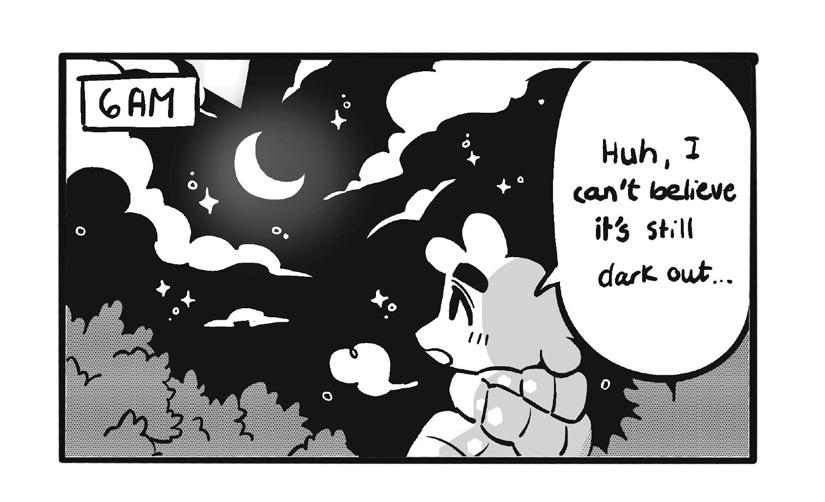

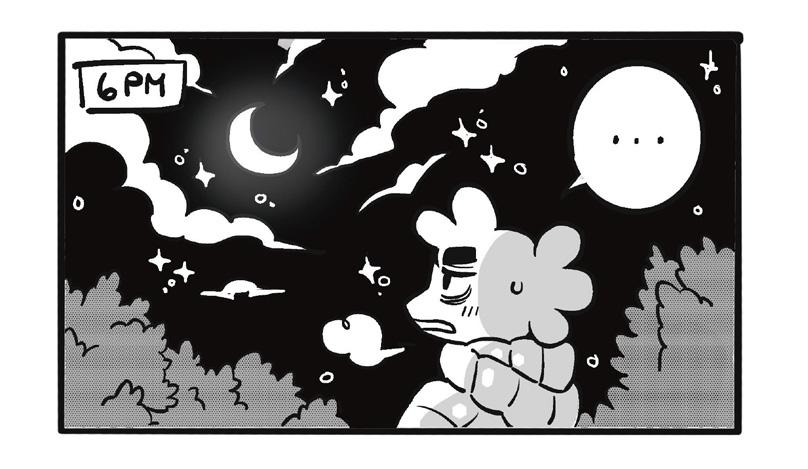
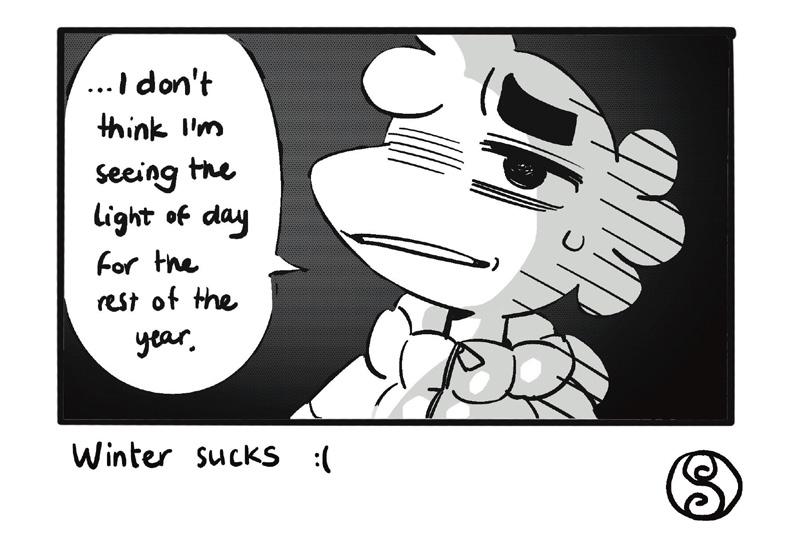 Comic by SAYA HIDAKA-MASSICOTTE @4a4k4a
Comic by SAYA HIDAKA-MASSICOTTE @4a4k4a
HOROSCOPES
ARIES (mar. 20 - apr. 18):
Life has been feeling like a simulation lately. Go watch a movie that feels relatable to your situation; it will make you feel better.
TAURUS (apr. 19 - may 20):
You may feel lost. Just use maps, it will lead you right back home!
GEMINI (may 21 - june 20):
You are thinking too much. Act on that impulsive thought, do it for the plot (it seriously needs some action). Just don’t text you know who!
CANCER (june 21 - july 22):
Enough talk, it’s time for action. Make up your mind and stick to your decision. Also, watch the attitude (it will get you in trouble).
LEO (july 23 - aug. 22):
Take off the rose coloured glasses and avoid the red flag staring straight at you. Despite my warning, I know you will still run in its direction at full speed.
VIRGO (aug. 23 - sept. 22):
Don’t worry, all the long days and nights of hard work are finally going to pay off. You will have the best sleep of your life.
LIBRA (sept. 23 - oct. 22):
Guess what? That to-do list of yours is not going to get done by itself. An unexpected twist is going to happen, so watch out for whenever you play Twister.
SCORPIO (oct. 23 - nov. 21):
You need to take a breather, quite literally. Go outside for a walk and inhale some fresh air; I know you have been nose-deep in your books studying constantly.
SAGITTARIUS (nov. 22 - dec. 21):
Treats are a must! It is important to reward yourself for your accomplishments, such as surviving the day, or attempting to study (it is the thought that counts).
CAPRICORN (dec. 22 - jan. 19):
You are out for blood this month, a force to be reckoned with (villain era?). You know what you want and will stop at nothing to get it.
AQUARIUS (jan. 20 - feb. 18):
Focus, focus, focus. Keep your eyes on the prize. You know what you want so do not let anything distract you from what you truly desire.
PISCES (feb. 19 - mar. 19):
If you have been looking for some sort of sign to do something, then this is it! Trust and follow your gut (you are probably hungry).
29 CURIOSITIES
PUZZLES
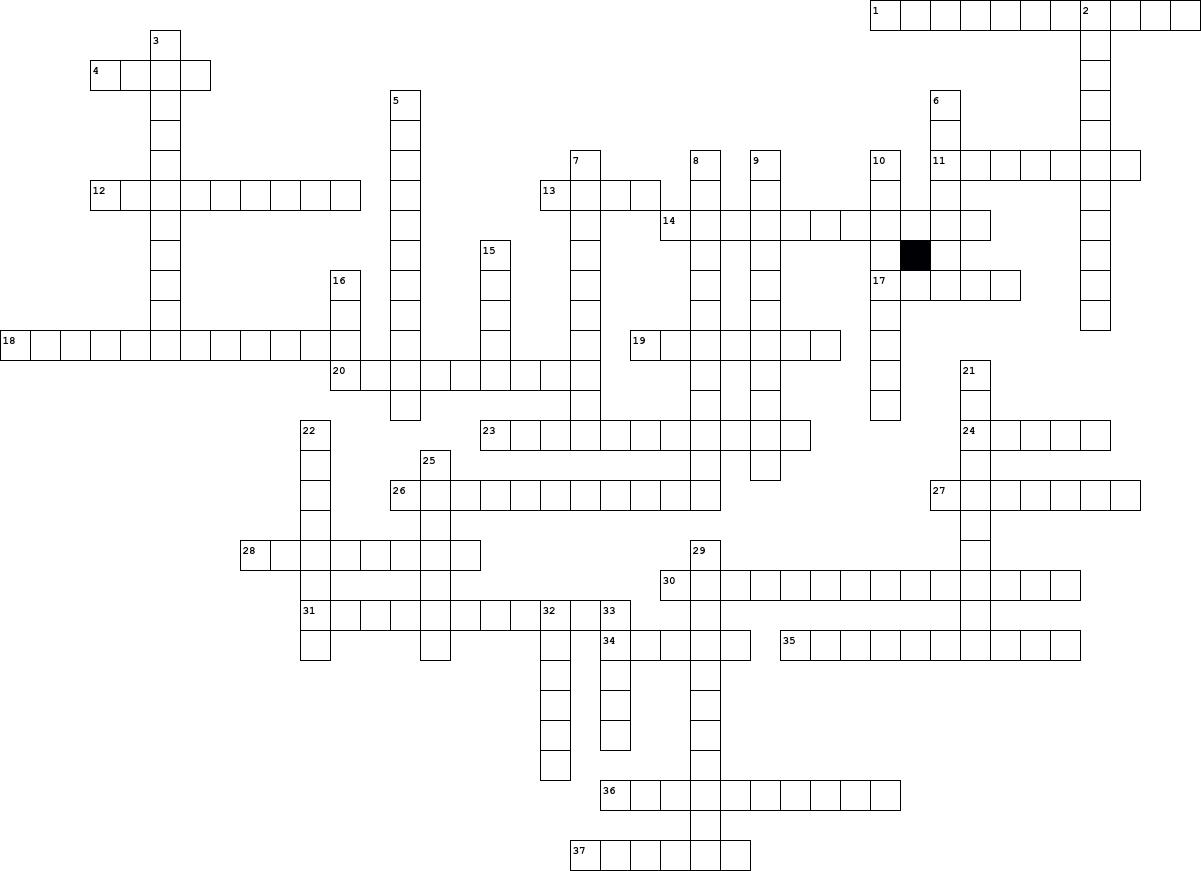
ACROSS
1. Side effects of becoming bald, the show […] , and also there’s Jesse Pinkguy or whatever his name is
4. Tour movie
11. Romantic lantern scene
12. Harry Potter’s arch-nemesis
13. Fight Club and F1 have this last name in common
14. Speculative dystopian fiction getting closer to reality
17. Green anti-social ogre
18. Iconic movie showdown from this summer
19. Yippee-ki-yay motherfucker
20. Your friendly neighborhood superhero
23..Director of a fantastic stop motion fox
24. Easily inspired by The Scarlet Letter
26. In three words: motel, taxidermy, and murder
27. Former wrestler turned tooth fairy, jungle explorer, and race car driver
28. In three words: drumming, jazz, angry-bald-guy
30. Race car drivers who are a family
31. Famous film franchise who’s title punily resembles “Olympics of famine”
34. He’s the totally dad of the family in the family show with the family - griffin
35. XOXO,
36. Réalisateur Denis [...] , QC REPRESENT !!
37. Director, [...] Bergman
COME BACK NEXT ISSUE FOR THE ANSWERS!
DOWN
2. Star Wars creator
3. Baby yoda
5. Unlucky ladybug stuck on a train
6. Calls his bug “milady”
7. Eccentric chocolate factory owner
8. Iconic mother daughter duo who love coffee
9. Our favourite, seemingly drunk, pirate
10. Madagascar zebra who got assaulted by the fresh prince
15. Movie award
16. Disney franchise whose main character’s name could be that of a dragmcqueen
21. Stanley Kubrick magnum opus
22. “Where the hell have you been loca ?”
25. Long crustacean and drama/romance movie with “the”
29. NYPD detective whose favourite christmas movie is [19 across]
32. Cinematic universe currently in phase 5
33. In three words: pointyears, bowlcut, enterprisecaptain
TAMARA GALINATO
30 THE PLANT
Curiosities
Curiosities by
Editor
ANSWER TO LAST MONTH’S PUZZLE
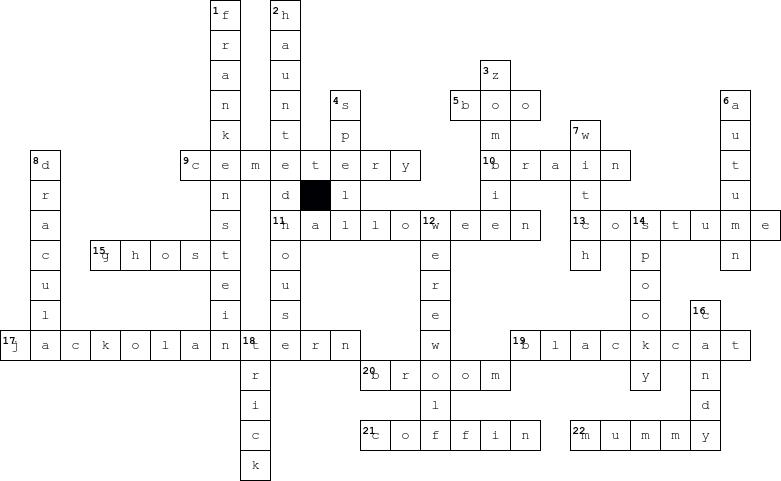
QUIZ
1. How would you spend a rainy day?
A. All wrapped up in a cozy blanket drinking hot chocolate and reading a book.
B. Day in with a friend and a movie marathon.
C. Going out with friends! The rain doesn’t stop me.
2. How do you listen to music?
A. With classic white wired earphones that get tangled all the time.
B. Putting your collection of vinyls to use.
C. Muting out the world with noise canceling headphones.
3. Pick 3 movies.
A. 10 things I Hate About You, The Perks of Being a Wallflower, and Coraline.
B. The Devil Wears Prada, The Princess Diaries, and Mamma Mia!
C. Mean Girls, Clueless, and Legally Blonde.
4. Most important part of an outfit?
A. A statement piece of clothing; to stand out from the crowd.
B. Accessories; it’s the little additions that make the outfit come together.
C. The basics; having those staple pieces in your closet are a must.
4. Where do you buy your books?
A. At second-hand bookstores, full of pre-loved books in search of a new home.
B. At Independent bookstores, supporting the local economy.
C. At Indigo, collecting those points and Starbucks in hand.
Results :
If you answered mostly As, you probably shop in thrift stores like Renaissance and Value Village. Whenever someone compliments a thrifted fit, you get satisfaction of saying, “Thanks, I thrifted it.” You adore searching through the sea of items in hope of finding those hidden gems that will become your new favourites. You certainly have patience and thrifting truly is a talent of yours.
If you answered mostly Bs, you probably shop in curated vintage stores. You more or less have the same aesthetic as those who thrift. You would rather not have to deal with the hassle of searching endlessly for items, so you do not mind spending an extra buck. You love the aesthetic of the vintage stores and enjoy trying on items just for the fun of it.
If you answered mostly Cs, you probably shop at the mall. You like the lively environment of the mall and getting yourself a little treat along the way. Most of the time you do not even shop, you just like walking around saying, “This is so cute!” and not buying anything. You have most likely tried to thrift at least once, but came out empty handed whereas your friend who thrifts all the time found at least some items that were exactly their size (relatable).
31 CURIOSITIES

MASTHEAD
Simone Bélanger Editor-in-Chief
Angélique Babineau Managing Editor
Khadija Fatima Copy Editor
Sophia Widell Graphic Designer
Antony Ma Graphic Designer
Sarah Bensetiti Secretary
Defne Aliefendioglu News Editor
Thomas Frenette Arts & Culture Editor
Mirren Bodanis Voices Editor
Sabina Bellisario-Giglio Science & Environment Editor
Hannah Dane Creative Writing Editor
Mia Gueli Visual Arts Editor
Marc Pham Sports Editor
Tamara Galinato Curiosities Editor
Sanad Hamdouna Cover Artist
Soraya Djia Social Media Manager
Saya Hidaka-Massicotte Cartoonist
Gloria Badibanga Staff Writer
Ezra Bucur Staff Writer
Emma Caspi Staff Writer
Raluca-Mara Mare Staff Writer
CONTRIBUTORS
Ana Sofia Castano
Jeanard Saberon
Kenzie Sproule
Florietta Loreto
Alexandra Soriano
Simone Sauvé
Kara Fusaro
Michaela Charbonneau
Naïla Bensaïfi
Toka Siyam
Charlotte Frey
CONTACT
The Plant Newspaper Dawson College
3040 Rue Sherbrooke O Montréal, QC H3Z 1A4 2C.12
theplantnews.com
theplantnewspaper@gmail.com @theplantdawson



32 THE PLANT









 Artwork by Sophia Widell @SOYAGRAPHICS
Artwork by Sophia Widell @SOYAGRAPHICS









 by MIA GUELI Visual Arts Editor
by MIA GUELI Visual Arts Editor



 Photo VIA RADIO-CANADA
Photo VIA RADIO-CANADA





 Comic by SAYA HIDAKA-MASSICOTTE @4a4k4a
Comic by SAYA HIDAKA-MASSICOTTE @4a4k4a





